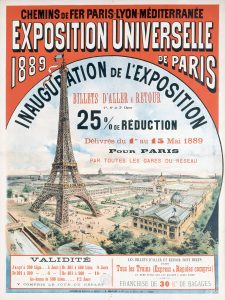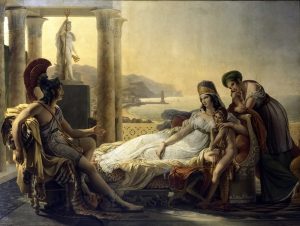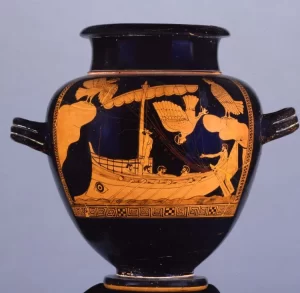John D. Rockefeller, Andrew Carnegie, and Cornelius Vanderbilt: The Gilded Age
The Gilded Age (roughly 1870-1900) was a period of rapid industrialization, economic growth, and immense wealth creation in the United States, but also of great social inequality and political corruption. John D. Rockefeller, Andrew Carnegie, and Cornelius Vanderbilt are the quintessential figures of this era, embodying its core characteristics as they built vast monopolies that reshaped American industry.
John D. Rockefeller (1839–1937): The Oil Tycoon
- Industry: Oil.
- Rise to Power: Rockefeller started in a modest business and, by 1870, founded Standard Oil. He pioneered the business practice of horizontal integration, ruthlessly buying up or driving out competitors in the refining industry. He then expanded with vertical integration, controlling every aspect of the oil business from drilling to distribution.
- Legacy: By the 1880s, Standard Oil controlled over 90% of the country’s oil production and transportation, making it one of the wealthiest companies in history. His methods were widely condemned as anti-competitive and led to the passage of antitrust laws, eventually resulting in the company’s breakup in 1911. Late in life, Rockefeller turned to massive philanthropy, endowing institutions like the University of Chicago and the Rockefeller Foundation, aiming to improve medicine and education.
Andrew Carnegie (1835–1919): The Steel Magnate
- Industry: Steel.
- Rise to Power: A Scottish immigrant who started as a bobbin boy in a textile mill, Carnegie built his fortune through a combination of shrewd business deals and technological innovation. He adopted the Bessemer process for steel production, which was far more efficient and cheaper. He used vertical integration to control the entire steel-making process, from coal and iron ore fields to the final rail factory.
- Legacy: His company, Carnegie Steel, became the largest steel producer in the world. He sold it to J.P. Morgan in 1901 for a staggering sum, which formed the basis for U.S. Steel. After selling his company, Carnegie dedicated himself to philanthropy, building thousands of libraries, concert halls (Carnegie Hall), and universities, famously articulating his philosophy of giving in his essay, “The Gospel of Wealth,” which argued that the rich had a moral obligation to use their wealth to benefit society.
Cornelius Vanderbilt (1794–1877): The Railroad Baron
- Industry: Shipping and railroads.
- Rise to Power: Known as “The Commodore,” Vanderbilt began his career in ferries and steamships, where he was a cutthroat competitor who often engaged in price wars to drive rivals out of business. In his sixties, he shifted his focus entirely to railroads, recognizing their potential. He systematically acquired and consolidated numerous smaller, competing lines into a powerful and efficient network, most notably the New York Central Railroad.
- Legacy: He was a master of finance and organization who demonstrated the power of a vast, integrated rail system. By controlling key routes, he amassed an immense fortune and became one of the first great railroad barons. His ruthless business tactics earned him a “Robber Baron” reputation. Still, his actions also pioneered the creation of the massive corporate structures that would dominate the American economy for a century. He was a less systematic philanthropist than Rockefeller or Carnegie, but he did make a notable contribution by endowing Vanderbilt University in Nashville, Tennessee.
These three men personified the duality of the Gilded Age. They were seen as both “Robber Barons,” for their predatory business tactics, exploitation of workers, and monopolistic control, and as “Captains of Industry,” for their visionary leadership, technological innovation, and creation of the infrastructure that built modern America. Their lives laid the foundation for the corporate capitalism of the 20th century and, through their philanthropy, reshaped American culture, education, and medicine.
John D. Rockefeller (1839–1937): The Oil Tycoon
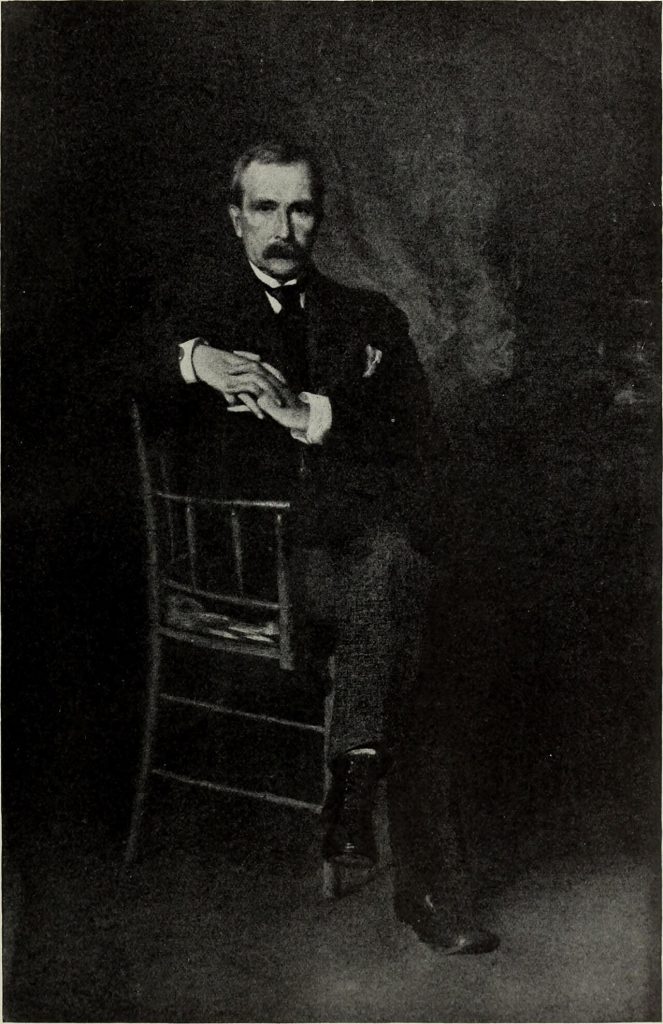
Portrait of John D Rockefeller by Eastman Johnson, 1895
(Wiki Image By Internet Archive Book Images – https://www.flickr.com/photos/internetarchivebookimages/14582077667/Source book page: https://archive.org/stream/internationalstu10newy08/internationalstu10newy08#page/n186/mode/1up, No restrictions, https://commons.wikimedia.org/w/index.php?curid=43916235)
John D. Rockefeller Quotes
John D. Rockefeller was known for his sharp business mind, but also for his deep religious beliefs and a commitment to philanthropy later in life. His quotes reflect this combination of business savvy and personal philosophy. Here are some of his most famous and insightful quotes:
On Business and Success:
- “I would rather earn 1% off a 100 people’s efforts than 100% of my own efforts.”
- “Don’t be afraid to give up the good to go for the great.”
- “The ability to deal with people is as purchasable a commodity as sugar or coffee, and I will pay more for that ability than for any other under the sun.”
- “I always tried to turn every disaster into an opportunity.”
- “If you want to succeed you should strike out on new paths, rather than travel the worn paths of accepted success.”
- “The secret of success is to do the common things uncommonly well.”
- “A friendship founded on business is a good deal better than a business founded on friendship.”
- “Good management consists in showing average people how to do the work of superior people.”
On Wealth and Life:
- “The poorest man I know is the man who has nothing but money.”
- “The only question with wealth is, what do you do with it?”
- “I believe the power to make money is a gift of God . . . to be developed and used to the best of our ability for the good of mankind.”
- “I know of nothing more despicable and pathetic than a man who devotes all the hours of the waking day to the making of money for money’s sake.”
- “I believe that thrift is essential to well-ordered living and that economy is a prime requisite of a sound financial structure, whether in government, business or personal affairs.”
On Responsibility and Philanthropy:
- “Every right implies a responsibility; every opportunity, an obligation; every possession, a duty.”
- “Charity is injurious unless it helps the recipient to become independent of it.”
- “Next to doing the right thing, the most important thing is to let people know you are doing the right thing.”
- “The only thing which is of lasting benefit to a man is that which he does for himself. Money which comes to him without effort on his part is seldom a benefit and often a curse.”
A Chronology of John D. Rockefeller’s Life
John D. Rockefeller’s life spanned a period of immense change in the United States, from the pre-Civil War era to the Great Depression. His career can be broadly divided into three phases: his early life and rise to business, the building of the Standard Oil monopoly, and his later years as a philanthropist.
Early Life and Business Career
- 1839: John Davison Rockefeller is born in Richford, New York.
- 1853: His family moves to Cleveland, Ohio.
- 1855: At age 16, Rockefeller gets his first job as a bookkeeper. He begins meticulously tracking his finances, including his charitable donations.
- 1859: He and a partner establish a commission merchant business. This same year, the first oil well was drilled in Titusville, Pennsylvania, sparking the oil boom.
- 1863: Rockefeller enters the oil refining business, building his first refinery near Cleveland.
- 1870: He and his partners incorporate the Standard Oil Company of Ohio, with a capital of $1 million.
Standard Oil and the Gilded Age
- 1872: In a period known as the “Cleveland Massacre,” Rockefeller buys out 22 of his 26 competitors in Cleveland, a key step toward consolidating the oil industry.
- 1881: Standard Oil is reorganized into the Standard Oil Trust, the first large-scale business trust in the U.S. It controls about 90% of the nation’s oil refineries and pipelines, giving it a near-monopoly.
- 1890: Congress passes the Sherman Antitrust Act to combat monopolies and trusts like Standard Oil.
- 1897: Rockefeller officially retires from the day-to-day operations of Standard Oil to focus on philanthropy, though he retains a large ownership stake.
- 1902-1904: Muckraking journalist Ida Tarbell’s exposé, The History of the Standard Oil Company, is published, detailing Rockefeller’s ruthless business tactics and turning public opinion against the company.
Philanthropy and Legacy
- 1901: He establishes the Rockefeller Institute for Medical Research (later Rockefeller University).
- 1911: After years of litigation, the U.S. Supreme Court orders the dissolution of the Standard Oil Trust for violating antitrust laws. It is broken up into 34 separate companies, including what would become ExxonMobil and Chevron.
- 1913: The Rockefeller Foundation is established, with a focus on public health, education, and medical research.
- 1916: Rockefeller’s net worth soars following the breakup of Standard Oil, making him the nation’s first billionaire.
- 1937: John D. Rockefeller dies at the age of 97, having given away more than $500 million to various causes.
John D. Rockefeller YouTube Video
Rockefeller: The World’s First Billionaire
- Views: 7 Million
- Channel: MagnatesMedia
- Link: http://www.youtube.com/watch?v=fNh_GyRbJDA
- Description: This is one of the most-viewed recent documentaries on Rockefeller, offering a comprehensive look at how he built his empire and became the world’s first billionaire.
The history of the Rockefeller family – documentary
- Views: 401,000
- Channel: I’m a millionaire
- Link: http://www.youtube.com/watch?v=ptreqGLGabc
- Description: A feature-length documentary that explores the entire Rockefeller family history, starting with John D. Rockefeller’s rise to power.
Rockefeller – The Original Billionaire
- Views: 244,000
- Channel: The People Profiles
- Link: http://www.youtube.com/watch?v=iN8prtqM35s
- Description: This video provides a detailed biographical profile of Rockefeller, focusing on his life story and business strategies.
The Rockefeller Dynasty: Power, Scandals, and Secrets Behind America’s First Billionaire Family
- Views: 57,000
- Channel: The Empire Inside
- Link: http://www.youtube.com/watch?v=d-epfEhLomU
- Description: A documentary that delves into the more controversial aspects of the Rockefeller family’s history, including scandals and secrets.
American Titans Documentary – John D Rockefeller
- Views: 9,600
- Channel: Business Documentaries
- Link: http://www.youtube.com/watch?v=wNZP65qk6rc
- Description: Part of a series on American industrial titans, this episode focuses specifically on Rockefeller’s impact on the business world.
John D. Rockefeller History
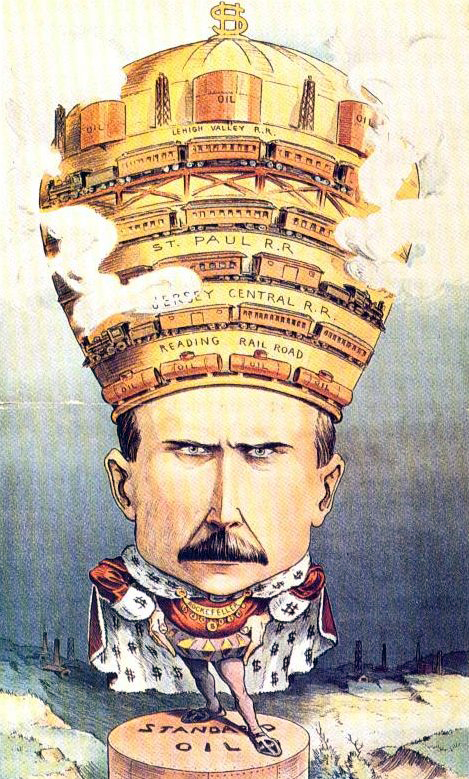
Rockefeller as an industrial emperor, 1901 cartoon from Puck magazine
(Wiki Image by Puck (magazine). Uploaded to Wikipedia by en:User: Rjensen – the English language Wikipedia (log), Public Domain, https://commons.wikimedia.org/w/index.php?curid=4374648)
John D. Rockefeller (1839–1937) was an American industrialist and philanthropist who became one of the wealthiest people in history by revolutionizing the oil industry. His career is a classic example of both the cutthroat capitalism of the Gilded Age and the rise of modern, systematic philanthropy.
Early Life and Business Acumen
Born in Richford, New York, Rockefeller came from humble beginnings. He moved with his family to Cleveland, Ohio, where he took a job as a bookkeeper at age 16. Even in his youth, he was known for his meticulous record-keeping and business savvy, saving his money and giving a portion to his church and various charities, a practice he would continue throughout his life. At age 20, he started his own commission business dealing in grain and other goods.
The Rise of Standard Oil
Sensing the potential of the burgeoning oil industry in western Pennsylvania, Rockefeller entered the refining business in 1863. He quickly recognized that the key to profitability was not in drilling for oil, which was a chaotic and unpredictable process, but in controlling the refining, transportation, and distribution of the finished product, kerosene. In 1870, he founded the Standard Oil Company of Ohio with his brother William, Henry Flagler, and other partners.
Rockefeller and his associates employed a series of aggressive and often ruthless business tactics to gain a near-total monopoly on the oil industry. These included:
- Acquiring Competitors: He would systematically buy out rival refineries, often offering them a choice between joining Standard Oil or being driven out of business.
- Railroad Rebates: He secretly negotiated favorable rates from railroads, which made it impossible for his competitors to ship their oil at a profitable price.
- Trusts: In 1882, he organized the Standard Oil Trust, the first major business trust in the U.S. This legal structure allowed him and a board of trustees to control dozens of affiliated companies, effectively giving him a monopoly on 90% of U.S. oil refining and marketing by the 1880s.
Public Scrutiny and Dissolution
Rockefeller’s enormous wealth and business practices made him a target of public criticism. “Muckraking” journalists, most famously Ida Tarbell in her book The History of the Standard Oil Company, exposed the company’s predatory tactics and collusion with railroads. This widespread public hostility contributed to the passage of antitrust laws, such as the Sherman Antitrust Act. In 1911, the U.S. Supreme Court found Standard Oil to be in violation of these laws and ordered it to be broken up into 34 separate entities. Ironically, this breakup made Rockefeller even richer, as the individual stock prices of the new companies soared. He became the country’s first billionaire.
Legacy of Philanthropy
As Rockefeller retired from the day-to-day management of his empire, he turned his attention to philanthropy with the same systematic intensity he had applied to business. He was heavily influenced by the philosophy of his advisor, Frederick T. Gates, who encouraged him to move beyond simple charity and address the root causes of major problems. This led him to establish several landmark philanthropic institutions, which pioneered a new, data-driven approach to giving:
- The Rockefeller Institute for Medical Research (1901): Now Rockefeller University, it was one of the first biomedical research centers in the U.S.
- The General Education Board (1902): Worked to improve education, particularly in the American South, for both African Americans and whites.
- The Rockefeller Foundation (1913): A global organization dedicated to promoting “the well-being of mankind throughout the world.” It was instrumental in the near-eradication of hookworm in the American South and yellow fever in the U.S.
Rockefeller died in 1937 at the age of 97, having given away more than $500 million during his lifetime. His twin legacies as a ruthless monopolist and a pioneering philanthropist continue to define discussions of American capitalism and charity.
John D. Rockefeller: Early Life and Business Acumen
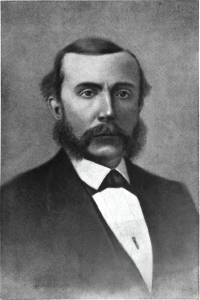
Rockefeller, c. 1872, shortly after founding Standard Oil
(Wiki Image By Unknown author – https://books.google.com/books?id=zaYZAAAAYAAJ, Public Domain, https://commons.wikimedia.org/w/index.php?curid=11340931)
John D. Rockefeller’s legendary business acumen was forged in the crucible of a challenging and formative early life. His upbringing instilled in him a unique combination of discipline, piety, and a relentless drive for efficiency and profit.
Humble Beginnings and Formative Influences
John Davison Rockefeller was born on July 8, 1839, in Richford, New York. His childhood was marked by stark contrasts, largely due to his father, William “Big Bill” Rockefeller, a traveling salesman and con artist who was often absent for long periods. This instilled in young John a sense of responsibility and a desire for stability.
In contrast, his mother, Eliza Davison Rockefeller, was a devout Baptist who instilled in her son a strong sense of frugality, discipline, and religious faith. From a young age, John was taught the value of hard work and careful financial management. A famous anecdote tells of him raising turkeys and keeping a detailed ledger of his profits, a practice that foreshadowed his meticulous attention to detail in his later business dealings.
First Steps into the Business World
In 1853, the Rockefeller family moved to the Cleveland, Ohio area. Rather than attending college, a teenage John D. enrolled in a local commercial college for a three-month course in bookkeeping. This practical education proved invaluable.
At the age of 16, he landed his first job as an assistant bookkeeper for Hewitt & Tuttle, a commission merchant firm in Cleveland. He approached this role with extraordinary seriousness and dedication, meticulously tracking every cent. He famously referred to his first day of work, September 26, 1855, as “Job Day” and celebrated it annually for the rest of his life. It was here that he honed his skills in cost analysis and developed an almost religious reverence for numbers and financial ledgers.
The Genesis of a Business Magnate
Rockefeller’s early business ventures showcased the core tenets of his emerging business philosophy:
- Calculated Risk-Taking: In 1859, at the age of 20, he and a partner, Maurice B. Clark, went into the commission merchant business for themselves. They raised $4,000 in capital (a significant sum at the time), with Rockefeller contributing his life savings of just under $1,000. This was a calculated risk, based on his thorough understanding of the business from his time at Hewitt & Tuttle.
- Seizing Opportunity: The outbreak of the Civil War created immense demand for agricultural products and other goods. The firm of Clark & Rockefeller profited handsomely by supplying the Union army. This experience taught Rockefeller the importance of recognizing and capitalizing on large-scale economic trends.
- A Vision for the Future: While his commission business was successful, Rockefeller saw an even greater opportunity in the nascent oil industry following the discovery of oil in nearby Pennsylvania. He understood that the real money wasn’t in drilling for oil—a chaotic and speculative endeavor—but in refining it. In 1863, he and his partners invested in their first oil refinery in Cleveland’s “Flats.” This marked his pivot towards the industry he would come to dominate.
Rockefeller’s early life and first business experiences were instrumental in shaping the man who would build the Standard Oil monopoly. The discipline learned from his mother, the meticulousness from his bookkeeping training, and the strategic foresight gained from his early ventures all coalesced to create one of the most formidable business minds in history. He was a master of efficiency, a shrewd negotiator, and had an unwavering focus on the bottom line, all traits that were evident long before he became the world’s richest man.
John D. Rockefeller: The Rise of Standard Oil
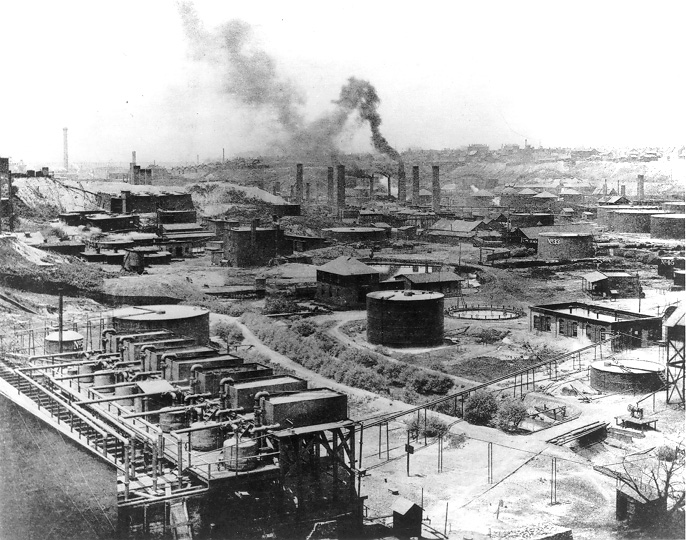
Standard Oil Refinery No. 1 in Cleveland, Ohio, 1897
(Wiki Image By http://ech.cwru.edu/ech-cgi/article.pl?id=BA, Public Domain, https://commons.wikimedia.org/w/index.php?curid=507193)
John D. Rockefeller’s creation of Standard Oil is a story of strategic brilliance, ruthless efficiency, and the relentless pursuit of market domination. Through a combination of savvy business practices and an unwavering focus on control, he built an industrial empire that reshaped the American economy.
From Refinery to Monopoly
The journey began in 1870 when Rockefeller, along with his brother William Rockefeller, Henry Flagler, Samuel Andrews, and Stephen Harkness, incorporated the Standard Oil Company in Ohio. At the time, the oil industry was chaotic and fragmented, with hundreds of small, inefficient refineries competing fiercely. Rockefeller saw an opportunity to bring “order” to the industry, with his company setting the “standard” for quality and efficiency.
Standard Oil’s initial strategy was one of horizontal integration, meaning it focused on acquiring or driving out its competitors in the refining sector. Rockefeller’s approach was methodical and highly effective:
- The Sell-or-Perish Proposition: He would systematically approach the owners of other Cleveland refineries and offer to buy them out. He would open his meticulously kept books to show them the profits they could make by joining him or the inevitable losses they would suffer by competing against his highly efficient operation.
- The Cleveland Massacre: This strategy culminated in a period in 1872 where, in a matter of weeks, Standard Oil acquired 22 of its 26 main competitors in Cleveland. This single move gave the company immense control over one of the nation’s primary refining centers.
The Octopus Spreads Its Tentacles 🐙
With a dominant position in refining secured, Rockefeller expanded his control through vertical integration, taking over every step of the oil production process. This allowed Standard Oil to control costs and logistics in a way no competitor could match.
Key elements of this vertical integration included:
- Transportation Dominance: Rockefeller recognized that controlling transportation was key to controlling the industry. He negotiated secret, preferential rebates from the railroads, which not only lowered his shipping costs but also raised the costs for his competitors. When railroads became less competitive, Standard Oil invested heavily in building a vast network of pipelines. This technological innovation allowed it to transport crude oil far more cheaply and efficiently.
- Control Over the Supply Chain: The company acquired its forests for lumber to make barrels, built its own barrel-making plants, and purchased fleets of railroad tank cars. This deep integration insulated Standard Oil from price fluctuations and supply disruptions from external suppliers.
The Standard Oil Trust and Public Backlash
To manage this sprawling empire and circumvent state laws that restricted corporations from owning stock in other companies, Rockefeller and his associates pioneered the trust model in 1882. The Standard Oil Trust was a legal arrangement where shareholders of various affiliated companies turned over their stock to a board of trustees, effectively creating a single, massive, centrally controlled monopoly.
By the 1880s, Standard Oil controlled roughly 90% of the U.S. oil refining capacity. This near-total dominance led to widespread public condemnation. The company was famously depicted in political cartoons as a menacing octopus, its tentacles encircling the machinery of government, commerce, and daily life.
This public outcry eventually led to government action, culminating in the passage of the Sherman Antitrust Act of 1890. While it took many more years of legal battles, the rise of Standard Oil and the public’s reaction to its monopolistic power fundamentally changed the relationship between government and big business in America, ultimately leading to the landmark Supreme Court decision in 1911 that broke up the Standard Oil empire.
John D. Rockefeller: Public Scrutiny and Dissolution
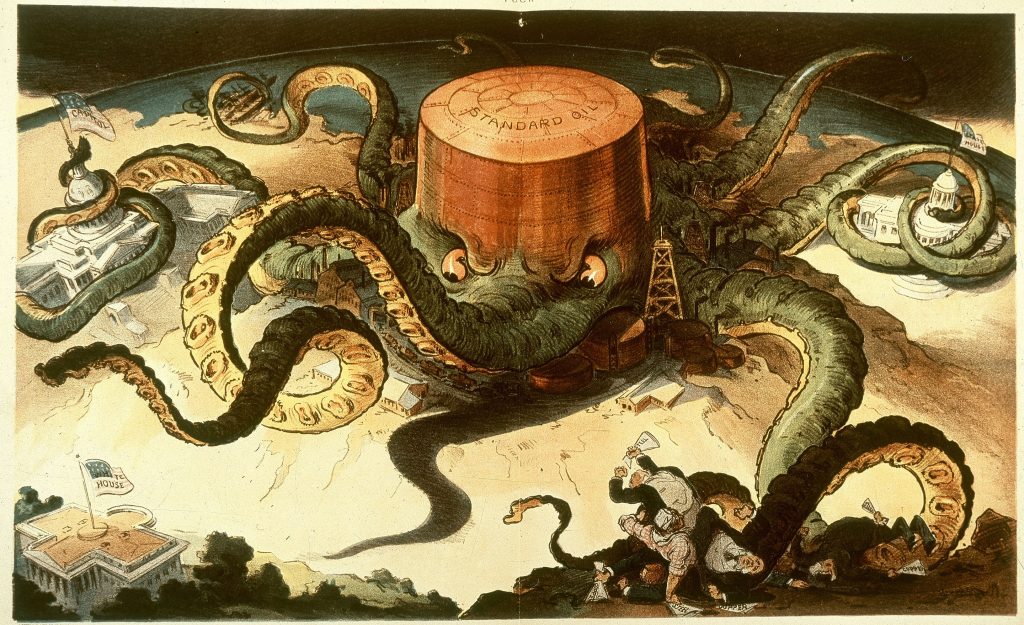
Fear of monopolies (“trusts”) is shown in this critique of Rockefeller’s Standard Oil Company by Udo J. Keppler, for Puck magazine, September 7, 1904.
(Wiki Image Public Domain, https://commons.wikimedia.org/w/index.php?curid=530376)
John D. Rockefeller and his company, Standard Oil, faced intense public scrutiny and were ultimately forced to dissolve due to their monopolistic practices, which crushed competition and gave them unprecedented control over the American economy.
Muckrakers and Public Outcry 🗣️
By the late 19th century, the immense power of Standard Oil had generated widespread public fear and resentment. The company was famously depicted in political cartoons as a menacing octopus, its tentacles wrapping around Congress, statehouses, and industries, symbolizing its suffocating grip on the nation.
This public anger was crystallized by a new generation of investigative journalists known as “muckrakers.” The most formidable of these was Ida Tarbell, whose father’s small oil business had been driven to ruin by Rockefeller’s tactics. Between 1902 and 1904, Tarbell published a meticulously researched and damning series of articles in McClure’s Magazine, later compiled into the book The History of the Standard Oil Company.
Her work exposed Standard Oil’s secret deals with railroads, its strategy of predatory pricing to eliminate rivals, and its overall ruthless business ethics. Tarbell’s reporting was not just an attack; it was a detailed, factual indictment that turned public opinion decisively against Rockefeller, portraying him not as a captain of industry, but as a “miser” and a monopolist.
The Government Strikes Back 🏛️
The growing public outrage translated into political and legal action. The primary weapon used against Standard Oil was the Sherman Antitrust Act of 1890, a federal law designed to prohibit business activities that were deemed anti-competitive.
For years, Standard Oil used its army of lawyers and complex corporate structure to fend off legal challenges from various states. However, the federal government, under President Theodore Roosevelt, a renowned “trustbuster,” became determined to break the company’s power.
The government’s lawsuit argued that Standard Oil’s actions constituted an “unreasonable” restraint of trade. The case methodically documented how the company had used its power to bully, intimidate, and absorb competitors to achieve and maintain its monopoly.
The Dissolution of an Empire
The legal battle culminated in the landmark 1911 Supreme Court decision in Standard Oil Co. of New Jersey v. United States. The Court ruled that Standard Oil’s business practices were in violation of the Sherman Antitrust Act and had created an illegal monopoly.
The Court ordered the dissolution of the Standard Oil trust, breaking it up into 34 separate, independent companies. Some of these successor companies would become giants in their own right, including:
- Standard Oil of New Jersey (later Exxon)
- Standard Oil of New York (later Mobil)
- Standard Oil of California (later Chevron)
Ironically, the breakup of Standard Oil made John D. Rockefeller far richer than he had ever been. He retained his shares in all the newly independent companies, and as they began to compete with one another, their combined stock value soared. While the government had succeeded in breaking up his monopoly, Rockefeller’s personal fortune reached its zenith only after his empire was dismantled.
John D. Rockefeller: Legacy of Philanthropy
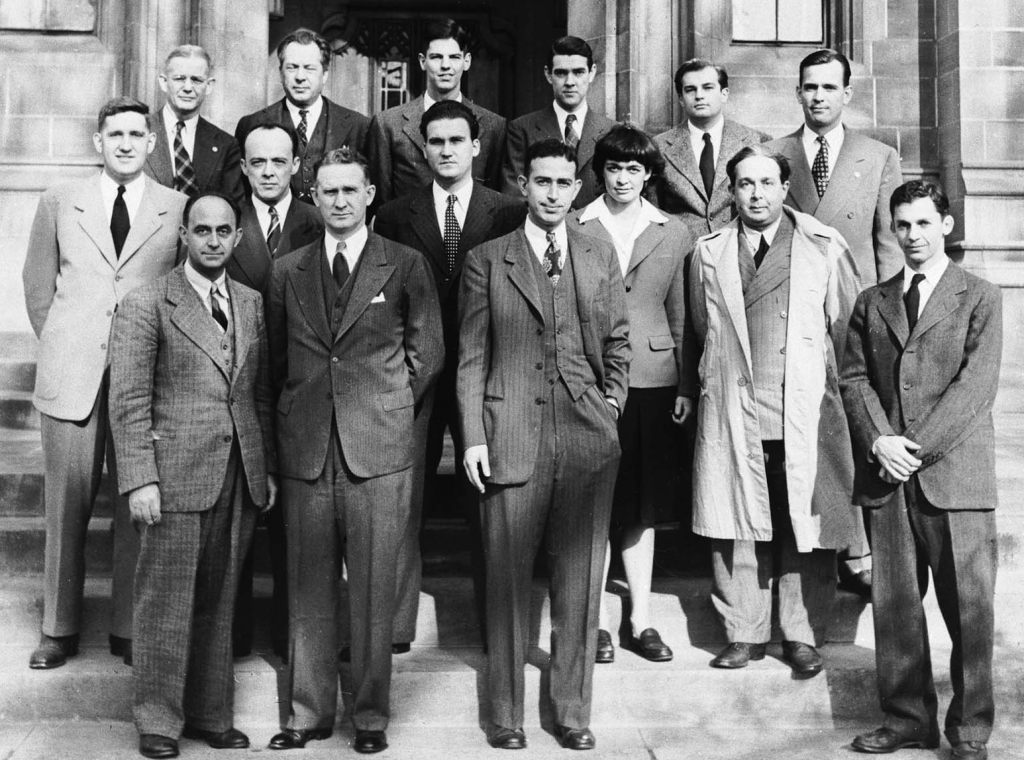
Some of the University of Chicago team that worked on the production of the world’s first human-caused self-sustaining nuclear reaction, including Enrico Fermi in the front row and Leó Szilárd in the second row
(Wiki Image By http://www.lanl.gov/worldview/welcome/history/08_chicago-reactor.htmlSource: en:Image:ChicagoPileTeam.png, Attribution, https://commons.wikimedia.org/w/index.php?curid=156863)
While his business practices drew intense criticism, John D. Rockefeller’s later life was defined by a visionary and transformative approach to philanthropy that established the template for large-scale, strategic giving in the 20th century. He is as much a titan of charity as he was of industry, with his contributions continuing to shape medicine, education, and scientific research across the globe.
From Tithing to Targeted Philanthropy
Rockefeller’s habit of giving was ingrained from his devout Baptist upbringing and his mother’s teaching to tithe a portion of his income. Throughout his career, he was a consistent donor to his church and various Baptist causes. However, as his fortune swelled to unprecedented levels, he became overwhelmed by pleas for assistance. This ad-hoc approach was inefficient and unsatisfying.
The pivotal shift came with the influence of Frederick T. Gates, a Baptist minister and educator whom Rockefeller enlisted in 1891. Gates urged Rockefeller to move beyond simply alleviating symptoms and instead attack the root causes of societal problems. He convinced Rockefeller to apply the same principles to philanthropy that had made Standard Oil so successful: efficiency, scalability, and a focus on data-driven, high-impact outcomes. Gates helped transform Rockefeller’s giving from a series of individual acts of charity into a systematic, “wholesale” philanthropic enterprise.
Building Institutions to Last
Under Gates’s guidance, Rockefeller’s philanthropy focused on creating and funding major, enduring institutions that could carry on their work in perpetuity. His most significant contributions include:
- The University of Chicago: In what became his first major philanthropic endeavor, Rockefeller, beginning in 1890, donated what would amount to over $35 million (a colossal sum at the time) to help establish and elevate the University of Chicago from a small Baptist college into a world-class research institution.
- The Rockefeller Institute for Medical Research (now Rockefeller University): Founded in 1901, this institute was revolutionary in its focus on biomedical research to understand and cure diseases. It became a model for medical research centers worldwide and has been home to numerous Nobel laureates.
- The General Education Board (GEB): Established in 1903, the GEB was a powerful force for improving education across the United States, particularly in the South. It supported higher education, and controversially, promoted a model of “industrial education” for African Americans that emphasized manual training. The GEB also funded a massive public health campaign that was instrumental in eradicating hookworm disease in the American South.
- The Rockefeller Foundation: Chartered in 1913 with an initial endowment of $100 million, this became the flagship of Rockefeller’s philanthropic efforts, with a broad mission “to promote the well-being of mankind throughout the world.” The foundation has played a crucial role in global public health, funding the development of the yellow fever vaccine, spearheading the “Green Revolution” that boosted agricultural yields in developing nations, and supporting countless other initiatives in the arts, sciences, and humanities.
A Legacy of Scientific and Social Progress
Rockefeller’s philanthropic legacy is marked by its strategic and scientific approach. He and his advisors believed in finding “leverage points” where targeted funding could generate significant and lasting change. This is evident in their focus on:
- Public Health and Medicine: Beyond eradicating specific diseases, Rockefeller’s funding helped to professionalize and modernize medical education in the United States and abroad, establishing schools of public health at institutions like Johns Hopkins and Harvard.
- Scientific Research: His support for basic scientific inquiry provided the foundation for countless discoveries and advancements in the 20th century.
- Education: By funding universities and educational boards, he aimed to create opportunities for knowledge and advancement, albeit sometimes through a lens that reflected the racial biases of the era.
In total, John D. Rockefeller gave away over $540 million in his lifetime, a sum that, as a percentage of the national GDP, makes him arguably the most generous philanthropist in American history. While the methods by which he acquired his fortune remain controversial, the scale, vision, and enduring impact of his charitable giving created a second, and in many ways more positive, legacy that continues to benefit humanity.
John D. Rockefeller Civilization
John D. Rockefeller: Advisors
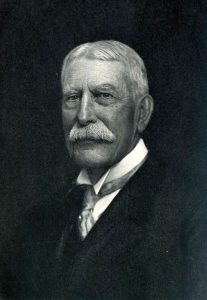
Portrait of Henry Flagler
(Wiki Image By J. J. Cade – The Cyclopaedia of American biography, 1918: https://archive.org/stream/cyclopaediaofame08wilsuoft#page/n55/mode/2up, Public Domain, https://commons.wikimedia.org/w/index.php?curid=26985744)
John D. Rockefeller, while a business genius in his own right, relied on a small circle of trusted advisors who were instrumental in both the creation of his industrial empire and the success of his philanthropic endeavors.
The Architect of the Empire: Henry Flagler तेल
Henry Morrison Flagler was not just an advisor but a co-founder and the strategic mastermind behind much of Standard Oil’s success. A fellow Ohio businessman, Flagler, joined forces with Rockefeller in 1867.
- Role and Influence: Flagler was the key negotiator and strategist. While Rockefeller was the meticulous, cost-conscious operator, Flagler was the bold visionary who devised many of the aggressive tactics that allowed Standard Oil to dominate the industry. He was instrumental in negotiating the secret, preferential rebates from the railroads that gave Standard Oil a decisive competitive advantage. His strategic thinking was central to the company’s rapid expansion and consolidation of the oil market.
The Soul of Philanthropy: Frederick T. Gates 🙏
Frederick Taylor Gates was a Baptist minister who became Rockefeller’s most important philanthropic advisor. Hired in 1891, Gates fundamentally reshaped Rockefeller’s approach to giving away his vast fortune.
- Role and Influence: Gates moved Rockefeller away from simple, ad-hoc charity and towards a model of “wholesale” philanthropy. He urged Rockefeller to apply the same principles to giving that he had to business: efficiency, scalability, and attacking the root causes of problems rather than just treating the symptoms. It was Gates who guided the creation of enduring institutions like the Rockefeller Institute for Medical Research (now Rockefeller University) and the Rockefeller Foundation. He provided the intellectual framework for Rockefeller’s philanthropy, transforming it from a personal endeavor into a scientific and systematic enterprise aimed at promoting human progress on a global scale.
Other Key Figures
While Flagler and Gates were his most influential advisors, other key figures played important roles:
- John D. Rockefeller Jr.: Rockefeller’s son, “Junior,” became a crucial advisor in his father’s later years, particularly in overseeing and professionalizing the family’s philanthropic activities. He was instrumental in the day-to-day management of the Rockefeller Foundation and other charitable institutions.
- Samuel Andrews: A brilliant chemist and one of the original partners, Andrews was the technical expert whose innovations in oil refining gave Standard Oil its initial edge in producing high-quality kerosene efficiently.
Rockefeller’s success was not a solo act. He could identify and empower brilliant advisors like Flagler and Gates, who allowed him not only to build an unprecedented industrial monopoly but also to create a philanthropic legacy that continues to shape the world today.
John D. Rockefeller: Worldwide Oil Economy
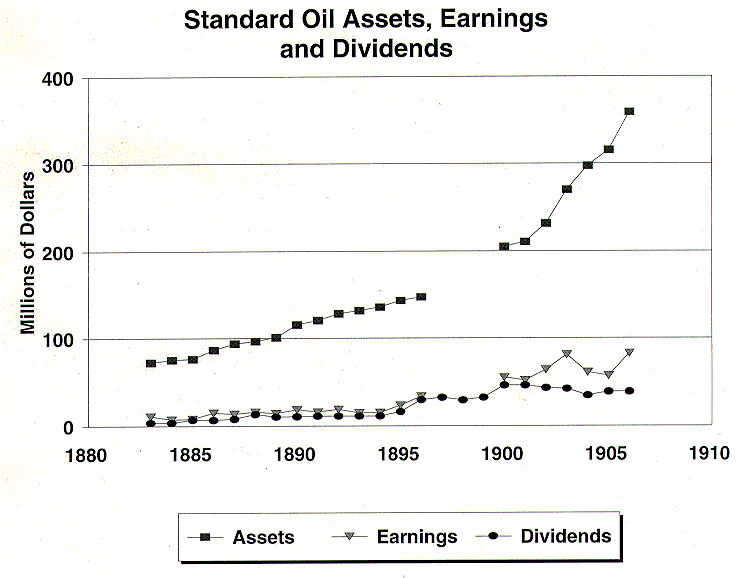
Financials
(Wiki Image By User:Rjensen – Own work, Public Domain, https://commons.wikimedia.org/w/index.php?curid=18016866)
John D. Rockefeller’s Standard Oil Company had a significant and lasting impact on the worldwide oil economy. By consolidating the fragmented U.S. oil industry, he was able to create the first truly global oil corporation, setting precedents for international business, pricing, and distribution.
U.S. as a Global Oil Power
Before Rockefeller, the oil industry was chaotic and inefficient. Through his mastery of horizontal and vertical integration, Rockefeller brought order and stability to the industry, making the United States the leading oil producer and exporter in the world. By 1885, roughly 70% of Standard Oil’s business was conducted abroad. This dominance established the U.S. as a major player in the global economy.
Global Distribution and Pricing
Standard Oil revolutionized the global distribution of oil. It built a vast international network of pipelines, storage tanks, and distribution channels. The company’s most important product was kerosene, which became the primary source of light for millions of people worldwide. In China, for example, Standard Oil distributed lamps and sold kerosene cheaply to encourage a shift away from vegetable oils. This strategy created a massive consumer base and made China Standard Oil the largest market in Asia.
Rockefeller’s monopoly enabled the company to influence global oil prices. It often kept prices low in foreign markets to undercut competition from rivals like the Nobel family’s oil company in Baku (Russia), while charging higher prices to American consumers.
Legacy of International Rivalry
Standard Oil’s global dominance didn’t go unchallenged. Its aggressive business practices and monopolistic control led to rivalries with other emerging oil companies, particularly from Europe. These international rivalries eventually contributed to the development of the “Seven Sisters,” a group of powerful Anglo-American oil companies that dominated the global oil market for much of the 20th century. Rockefeller’s business model and the geopolitical responses to it laid the groundwork for the modern global energy market.
John D. Rockefeller: Geopolitics
John D. Rockefeller’s geopolitical impact was primarily indirect, stemming from the global reach of Standard Oil and the international influence of the Rockefeller Foundation. While he focused on his business and philanthropy, his work helped establish the United States as a dominant player in the global oil market. It influenced foreign policy through his family’s subsequent generations.
Standard Oil’s Global Reach
- Export Dominance: Standard Oil was described as the world’s first truly global corporation. By the late 19th century, roughly 70% of its business was conducted abroad. It sold kerosene worldwide, providing light to millions in Europe, Asia, and beyond. This global dominance helped establish the U.S. as a major economic power on the international stage.
- A Catalyst for Competition: Standard Oil’s monopolistic presence in foreign markets was not without its challenges. It often faced competition from European oil companies, some of which had close ties to their respective governments. This rivalry over global oil markets became a significant factor in international economic relations.
The Rockefeller Foundation’s International Influence
After retiring from business, Rockefeller used his wealth to establish the Rockefeller Foundation in 1913. This institution had a profound geopolitical impact through its work in public health, education, and science.
- Global Public Health: The foundation’s International Health Division conducted extensive campaigns to combat diseases like hookworm and yellow fever in dozens of countries. This work not only improved public health but also served as a form of “soft power,” boosting America’s international reputation and influence.
- The Green Revolution: The Rockefeller Foundation’s agricultural development program in Mexico in the 1940s helped to create the “Green Revolution,” a series of research and technology initiatives that dramatically increased agricultural production worldwide. This effort had a massive impact on global food security.
The Rockefeller Family’s Legacy in Foreign Policy
While John D. Rockefeller’s direct involvement in geopolitics was limited, his descendants became deeply involved in American foreign policy and international relations. For example, his grandson Nelson Rockefeller served as Vice President. He held various roles in the State Department, and his grandson, David Rockefeller, became a prominent figure in international banking and foreign affairs. They continued to use their wealth and influence to shape global policy through institutions like the Council on Foreign Relations and the Trilateral Commission.
John D. Rockefeller: Law
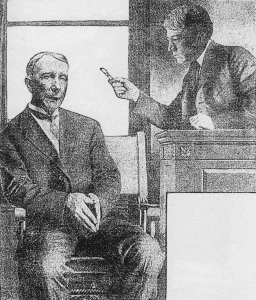
Judge Kenesaw Mountain Landis wags his pen at John D. Rockefeller, who is sitting in the witness stand, during the Standard Oil case on July 6, 1907.
(Wiki Image By Unknown author – Microfilm image reproduced in Landis, Lincoln (2006) From Pilgrimage to Promise: Civil War Heritage and the Landis Boys of Logansport, Indiana, Maryland, United States: Heritage Books, pp. 131 ISBN: 0-7884-3831-X., Public Domain, https://commons.wikimedia.org/w/index.php?curid=15447161)
Legal and political challenges defined John D. Rockefeller’s business career. His company, Standard Oil, became a prime target for antitrust legislation, which ultimately led to the company being broken up by the Supreme Court.
The Rise of the Trust and Antitrust Challenges
Rockefeller’s legal challenges stemmed from his monopolistic practices. In 1882, he created the Standard Oil Trust to consolidate his numerous business holdings. This trust was a new legal arrangement that allowed a small group of trustees to manage a vast network of companies as a single entity, effectively circumventing laws that prohibited a corporation from owning stock in another.
This powerful new corporate structure, combined with his ruthless business tactics, such as securing secret railroad rebates and predatory pricing, led to public outcry. Critics argued that Standard Oil was stifling competition, controlling prices, and wielding undue political influence.
The Sherman Antitrust Act and the Supreme Court
The backlash against monopolies like Standard Oil prompted the U.S. government to act. In 1890, Congress passed the Sherman Antitrust Act, the first federal law to prohibit monopolies and “every contract, combination… or conspiracy, in restraint of trade.”
For over a decade, the government and various states used the law to challenge Standard Oil. The legal battle culminated in the landmark 1911 Supreme Court case, Standard Oil Co. of New Jersey v. United States. The court ruled that Standard Oil had indeed engaged in “unreasonable” restraint of trade and had to be dissolved. The court’s decision was a major victory for the federal government and established a precedent for regulating corporate power. The ruling broke up Standard Oil into 34 separate, independent companies, including the precursors to modern-day ExxonMobil and Chevron.
Political Cartoons
Public sentiment against Standard Oil was often captured in political cartoons of the era. A common visual metaphor was the “Standard Oil Octopus,” with its tentacles wrapped around the U.S. Capitol, the White House, and other industries, symbolizing the company’s immense and unchecked influence over the government and economy.
John D. Rockefeller: Political People
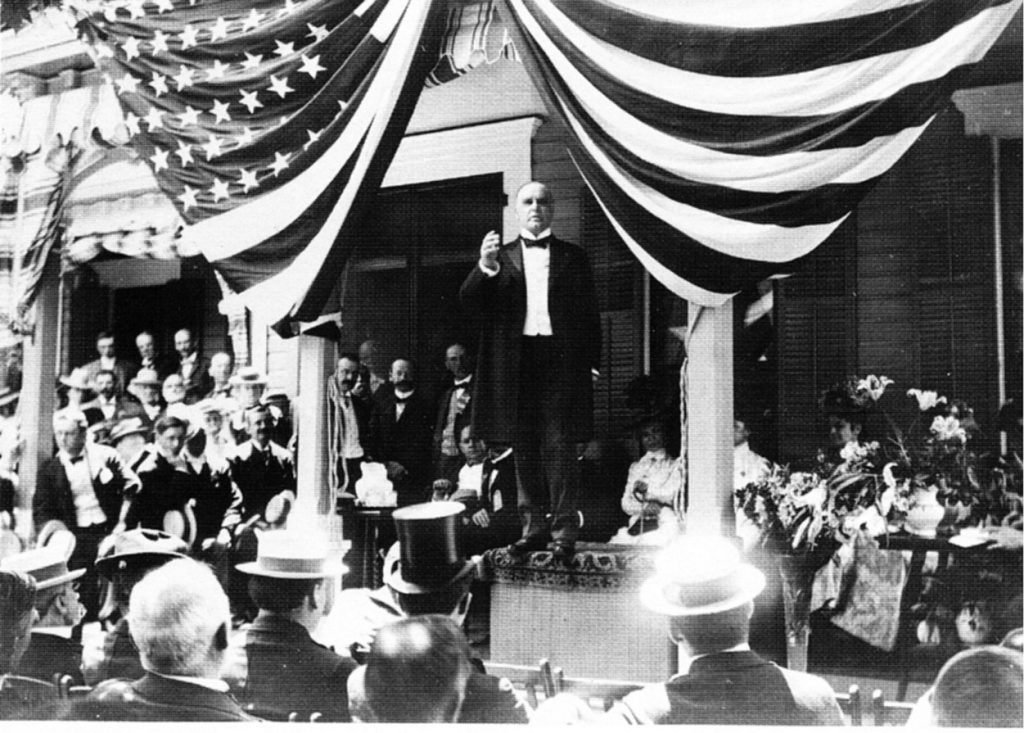
The big corporations, such as Standard Oil, made large contributions in 1896 to McKinley’s presidential campaign, managed by Mark Hanna.
(Wiki Image Public Domain, https://commons.wikimedia.org/w/index.php?curid=17913435)
Yes, John D. Rockefeller had significant interactions with political figures, both as allies who protected his interests and as adversaries who sought to dismantle his monopoly.
John D. Rockefeller’s relationship with the political world was complex and often contentious. While he personally avoided the political spotlight, his company, Standard Oil, was a powerful force that actively sought to influence politicians and policy to protect its vast business empire. At the same time, this immense power made him a prime target for ambitious, reform-minded political figures.
Cultivating Political Allies 🤝
To protect its interests, Standard Oil engaged in extensive lobbying and provided financial support to political campaigns. The goal was to elect friendly politicians who would resist calls for regulation and antitrust action. Key allies included:
- Senator Nelson Aldrich of Rhode Island: A powerful and influential Republican senator, Aldrich was a staunch defender of big business and a key ally of Standard Oil in Congress. His daughter, Abby Aldrich, married John D. Rockefeller Jr., further cementing the close ties between the two families.
- Mark Hanna: A U.S. Senator and the powerful chairman of the Republican National Committee, Hanna was a master political strategist who orchestrated William McKinley’s presidential campaigns. He was a strong proponent of business interests, and his political machine benefited from the support of corporations like Standard Oil.
These relationships helped ensure that for many years, the federal government maintained a hands-off approach to regulating Standard Oil’s business practices.
Political Adversaries and “Trust-Busting” 🤺
As Standard Oil’s monopoly grew, so did public resentment and the number of political opponents who saw the company as a threat to democracy and free-market competition. The “trust-busting” movement gained momentum, led by several key figures:
- President Theodore Roosevelt: While he distinguished between “good” and “bad” trusts, Roosevelt’s administration initiated the federal lawsuit under the Sherman Antitrust Act that ultimately led to the breakup of Standard Oil. Roosevelt’s public persona as a “trust-buster” was largely defined by his administration’s fight against Rockefeller’s empire.
- Ida Tarbell: Though not a politician, the investigative journalism of this “muckraker” was profoundly political. Her meticulously researched exposé, The History of the Standard Oil Company, provided the public and politicians with the ammunition needed to build the case against the company, turning public opinion into an unstoppable political force.
The political battles surrounding Standard Oil were a defining feature of the Gilded Age and the subsequent Progressive Era. They highlighted the growing tensions between immense corporate power and the role of government, ultimately leading to landmark legal and political precedents that reshaped the relationship between business and politics in America.
John D. Rockefeller: Rich and Poor
John D. Rockefeller had a complex view of the relationship between the rich and the poor, which evolved over his life. He believed in a form of social Darwinism, where wealth was a sign of hard work and divine favor, but he also came to believe that the wealthy had a moral obligation to use their fortunes to benefit society.
Rockefeller’s Views on Wealth and Poverty
- Divine Providence: Rockefeller was a devout Baptist who believed that his ability to make money was a “gift of God.” He saw his immense wealth not as a personal achievement but as a blessing to be used for the “good of mankind.” This belief led him to separate his business tactics from his personal and charitable life. He was able to be a ruthless businessman on one hand and a dedicated philanthropist on the other.
- Meritocracy: Rockefeller believed that wealth was a direct result of hard work, thrift, and a sound character. He was not concerned with the wide gap between the rich and the poor, seeing it as part of a natural, God-given order. He believed that if a man was poor, it was often due to a lack of these virtues.
- “Wise Giving”: While he gave away a massive fortune, Rockefeller was critical of what he saw as “indiscriminate charity” that simply gave money to the poor. He believed this was a harmful practice that could encourage idleness. Instead, he pioneered a new, systematic approach to philanthropy, focusing on what he called “root causes.” He sought to create institutions that would help people help themselves, primarily through education, scientific research, and public health initiatives.
Economic Impact and the Rich-Poor Gap
On one hand, Rockefeller’s business practices contributed to a widening of the rich-poor gap during the Gilded Age. His monopolistic control of the oil industry crushed smaller competitors, and his immense wealth stood in stark contrast to the low wages and poor working conditions of many of his employees.
However, his later philanthropic work was a direct attempt to address some of the problems created by industrial capitalism, such as disease and lack of educational opportunities. His foundations, such as the University of Chicago and the Rockefeller Foundation, provided numerous opportunities and played a crucial role in addressing major public health crises.
This video explores how Rockefeller’s mindset on wealth allowed him to become the richest man in history. Secrets The Rich Use That The Poor Don’t Know | John D. Rockefeller
John D. Rockefeller: Science

Hookworm life cycle
(Wiki Image By The original uploader was Sonett72 at English Wikipedia. – CDC – Department of Parasitic Diseaseshttp://www.dpd.cdc.gov/dpdx/HTML/ImageLibrary/Hookworm_il.htmhttp://www.dpd.cdc.gov/dpdx/images/ParasiteImages/G-L/Hookworm/Hookworm_LifeCycle.gifOriginally from en.wikipedia; description page is/was here., Public Domain, https://commons.wikimedia.org/w/index.php?curid=1860052)
John D. Rockefeller was a pivotal figure for science in two fundamental ways: first, by applying scientific principles to build his oil empire, and second, by using his immense fortune to create the institutional framework for modern scientific medicine.
Science for Profit: The Standard Oil Machine 🧪
While not a scientist himself, Rockefeller was a master at applying scientific methods to business. At a time when many industries relied on guesswork, Standard Oil was built on a foundation of chemistry and efficiency.
- Refining and Chemistry: Standard Oil hired professional chemists to analyze crude oil and systematically improve the refining process. Their primary goal was to maximize the yield of high-value kerosene, the main product used for lighting.
- Waste as a Byproduct: The company’s chemists were also tasked with finding uses for the materials left over from refining. They turned this industrial “waste” into a massive source of profit by developing and marketing over 300 different products, including petroleum jelly (Vaseline), paraffin wax for candles, and gasoline, which was initially considered a useless byproduct.
Philanthropy for Science: Building Modern Medicine 🔬
Rockefeller’s most enduring scientific legacy comes from his revolutionary philanthropy, which was guided by his advisor, Frederick T. Gates. Gates convinced Rockefeller to move beyond traditional charity and instead attack the root causes of human suffering through scientific research.
- The Rockefeller Institute for Medical Research (1901): This was his flagship scientific project. Rockefeller founded this institute (now Rockefeller University) in New York City as a dedicated place where scientists could conduct fundamental research into the underlying causes of disease, free from the demands of teaching or treating patients. It became the model for modern biomedical research centers and has been home to dozens of Nobel Prize winners.
- Eradicating Disease: Through his foundations, Rockefeller funded the first large-scale public health campaigns based on scientific evidence. The most famous example was the successful effort to eradicate hookworm in the American South. This wasn’t just about handing out medicine; it was a systematic campaign involving mapping infection zones, treatment, education, and prevention.
- Funding Universities: His massive donations to the University of Chicago helped transform it into a world-class research institution that would become a leader in numerous scientific fields, including physics, where the first self-sustaining nuclear reaction was achieved.
Rockefeller’s approach was to use his wealth to build permanent, professional institutions that would advance scientific knowledge long after he was gone, a model that has influenced major foundations ever since.
John D. Rockefeller: Technology
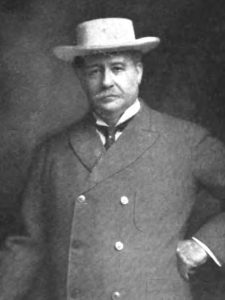
Samuel Andrews (1836-1904) was a chemist and inventor.
(Wiki Image By Unknown photographer – Munsey’s Magazine. Vol. 47, no. 1. April, 1912, Public Domain, https://commons.wikimedia.org/w/index.php?curid=161533620)
John D. Rockefeller’s success was fundamentally intertwined with the strategic use and control of technology in the burgeoning oil industry. While not an inventor himself, his genius lay in recognizing, acquiring, and standardizing the most efficient technologies to dominate the market.
Refining and Byproducts 🧪
The most critical technology for Rockefeller’s Standard Oil was oil refining. In the late 19th century, the primary product from crude oil was kerosene for lighting. Early refining processes were inefficient and dangerous, often wasting a significant portion of the crude oil.
Rockefeller’s key strategies included:
- Hiring Experts: He brought in the best chemists and engineers, like Samuel Andrews, to squeeze every last drop of value from a barrel of crude oil.
- Waste Utilization: Standard Oil’s refineries were at the forefront of developing ways to use the “waste” products from kerosene refining. They developed over 300 different products, including:
- Gasoline: Initially a volatile byproduct dumped into rivers, it later became the fuel for the internal combustion engine.
- Paraffin wax: Used for making candles.
- Vaseline: A petroleum jelly for medical and cosmetic purposes.
- Lubricating oils: Essential for the machinery of the Second Industrial Revolution.
This focus on efficiency and byproduct utilization dramatically lowered his costs and allowed him to undercut competitors.
Transportation and Logistics 🚂
Controlling the transportation of oil was just as crucial as refining it—Rockefeller leveraged technology to create a ruthlessly efficient logistics network.
- Pipelines: While initially relying on railroads, Rockefeller quickly saw the potential of pipelines to move crude oil cheaply and directly from the well to the refinery. Standard Oil invested heavily in building a vast network of pipelines, which gave it a massive competitive advantage. They could bypass the railroads, which they had previously strong-armed into giving them preferential rates and rebates.
- Railroad Tank Cars: Before pipelines, oil was transported in leaky wooden barrels. Standard Oil pioneered the use of cylindrical, iron railroad tank cars, which were safer, cheaper, and held more oil: this innovation standardized oil transport and further reduced costs.
Control Through Technology
For Rockefeller, technology was a tool for achieving economies of scale. By standardizing equipment and processes across all his refineries and transportation networks, he created an assembly line-like efficiency. If a part broke at one refinery, a standardized replacement from another could be quickly installed, minimizing downtime. This level of integration and standardization was unprecedented and allowed Standard Oil to control an estimated 90% of the U.S. oil market at its peak. His technological dominance was a key factor in the creation of his monopoly.
Andrew Carnegie (1835–1919): The Steel Magnate
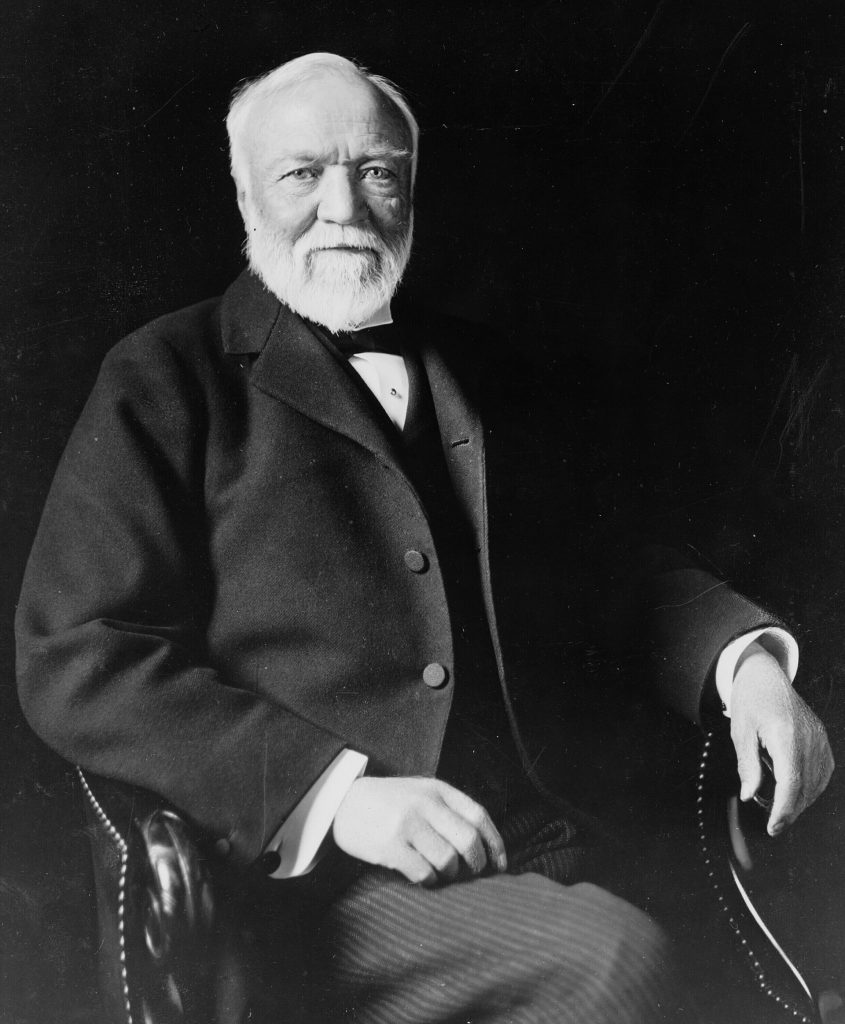
Carnegie, c. 1913
(Wiki Image By Theodore C. Marceau – Library of Congress, Public Domain, https://commons.wikimedia.org/w/index.php?curid=168476589)
Andrew Carnegie Quotes
Andrew Carnegie was a prolific writer and speaker, and his quotes often reflect his “Gospel of Wealth” philosophy, which stressed that the rich had a moral obligation to use their fortunes to benefit society. He also offered many insights on business, success, and hard work.
Here are some of his most famous quotes:
On Wealth and Philanthropy:
- “The man who dies rich, dies disgraced.”
- “This, then, is held to be the duty of the man of wealth: to set an example of modest, unostentatious living, shunning display or extravagance; to provide moderately for the legitimate wants of those dependent upon him; and, after doing so, to consider all surplus revenues which come to him simply as trust funds, which he is called upon to administer, and strictly bound as a matter of duty to administer in the manner which, in his judgment, is best calculated to produce the most beneficial results for the community—the man of wealth thus becoming the mere trustee and agent for his poorer brethren, bringing to their service his superior wisdom, experience, and ability to administer, doing for them better than they would or could do for themselves.” (From The Gospel of Wealth)
- “The best way of doing good to the poor is not to give them money, but to give them the means of helping themselves.”
- “Surplus wealth is a sacred trust which its possessor is bound to administer in his lifetime for the good of the community.”
On Business and Success:
- “The secret of success is to do the common things uncommonly well.”
- “The way to become rich is to put all your eggs in one basket and then watch that basket.”
- “You cannot push any one up a ladder unless he be willing to climb a little himself.”
- “Do your duty and a little more and the future will take care of itself.”
- “I resolved to stop accumulating and begin the infinitely more serious and difficult task of wise distribution.”
- “No man will make a great leader who wants to do it all himself or get all the credit for doing it.”
On Life and Wisdom:
- “As I grow older, I pay less attention to what men say. I just watch what they do.”
- “There is little success where there is little laughter.”
- “There is no class so pitiably wretched as that which possesses money and nothing else.”
- “A library outranks any other one thing a community can do to benefit its people. It is a never failing spring in the desert.”
- “He that cannot reason is a fool. He that will not is a bigot. He that dare not is a slave.”
A Chronology of Andrew Carnegie’s Life
Andrew Carnegie’s life is a classic “rags-to-riches” story, a journey from a poor Scottish immigrant to the world’s wealthiest man, and finally to a renowned philanthropist. His chronology can be broken down into three key periods: his humble beginnings, his rise as a steel magnate, and his years dedicated to philanthropy.
Early Life and Rise to Success
- 1835: Andrew Carnegie is born in Dunfermline, Scotland, to a family of handloom weavers.
- 1848: Facing economic hardship, his family immigrates to Allegheny, Pennsylvania, a bustling industrial town near Pittsburgh.
- 1849: Carnegie gets his first job as a bobbin boy in a cotton mill for $1.20 a week. He soon becomes a messenger boy for a telegraph office.
- 1853: He is hired by Thomas A. Scott of the Pennsylvania Railroad as a telegrapher and personal assistant, a position that gives him invaluable experience in business and management.
- 1865: Carnegie leaves the Pennsylvania Railroad to focus on his growing investments, particularly in the iron industry. He founded the Keystone Bridge Company, which specializes in iron bridges.
- 1868: Carnegie writes a personal memo to himself, pledging to retire at age 35 to pursue a life of public service and education, a goal he would not fully achieve for more than 30 years.
The Steel Empire
- 1873: Carnegie shifts his focus to the steel industry, founding his first steel mill near Pittsburgh. He adopts the new Bessemer process, which allows for the mass production of steel, making him a leader in the industry.
- 1889: Carnegie publishes his famous essay, “The Gospel of Wealth,” in which he argues that the rich have a moral obligation to use their fortunes to improve society.
- 1892: Carnegie’s various business holdings are consolidated into the Carnegie Steel Company, which becomes the largest steel company in the world. This is also the year of the controversial Homestead Strike, a violent labor dispute at one of his plants.
Philanthropy and Legacy
- 1901: At age 66, Carnegie sells Carnegie Steel to banker J.P. Morgan for about $480 million, making him the richest man in the world. Morgan merges it with other companies to form U.S. Steel, the world’s first billion-dollar corporation.
- 1901–1919: Carnegie dedicates the rest of his life to philanthropy, giving away more than $350 million. He funds the construction of over 2,500 public libraries, founds Carnegie Mellon University, and establishes several trusts, including the Carnegie Foundation for the Advancement of Teaching and the Carnegie Endowment for International Peace.
- 1919: Andrew Carnegie dies on August 11 at his estate in Massachusetts, having given away almost 90% of his fortune.
Andrew Carnegie YouTube Video
How Andrew Carnegie Became The Richest Man In The World
- Views: 3.9 Million
- Channel: Business Casual
- Link: http://www.youtube.com/watch?v=LNYkor8IDoA
- Description: This highly-viewed video provides a concise and engaging overview of Carnegie’s “rags-to-riches” story and his business strategies.
Andrew Carnegie Documentary: One Of The Wealthiest People of All Time.
- Views: 297,000
- Channel: Tounce AI
- Link: http://www.youtube.com/watch?v=JQI5ozFdNYs
- Description: A feature-length documentary that offers a deep dive into Carnegie’s life, from his impoverished childhood in Scotland to becoming a titan of industry.
ANDREW CARNEGIE AND NAPOLEON HILL DOCUMENTARY-PART ONE
- Views: 393,000
- Channel: Gary Chappell
- Link: http://www.youtube.com/watch?v=67mLCtTjwGg
- Description: This documentary explores the connection and philosophical alignment between Andrew Carnegie and Napoleon Hill, author of “Think and Grow Rich.”
Man of Steel: Andrew Carnegie | The Gilded Age
- Views: 114,000
- Channel: American Experience | PBS
- Link: http://www.youtube.com/watch?v=vmbRtjN0gAk
- Description: A short clip from the acclaimed PBS series “The Gilded Age” that introduces Andrew Carnegie as a central figure of the era.
Andrew Carnegie’s 20 Laws of Power
- Views: 7,700
- Channel: Napoleonism
- Link: http://www.youtube.com/watch?v=fQXjotQbf9o
- Description: This video analyzes the strategies and principles that Andrew Carnegie used to build his power and influence in the business world.
Andrew Carnegie History
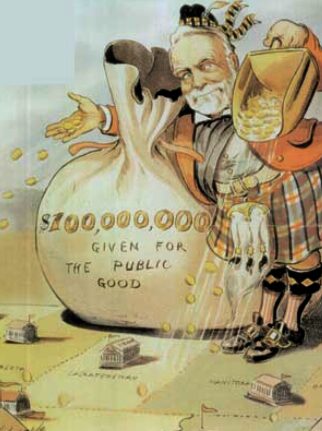
Andrew Carnegie’s philanthropy. Puck magazine cartoon by Louis Dalrymple, 1903
(Wiki Image By Louis Dalrymple. – Puck Magazine June 1, 1903, published in New York City, Public Domain, https://commons.wikimedia.org/w/index.php?curid=25860051)
Andrew Carnegie (1835–1919) was a Scottish-American industrialist who led the expansion of the American steel industry in the late 19th century, becoming one of the richest Americans in history. His life is a classic “rags-to-riches” story, a testament to the opportunities of the Gilded Age, and a case study in the contradictions of capitalism and philanthropy.
Early Life and Rise to Riches
Born into a family of handloom weavers in Dunfermline, Scotland, Carnegie’s life took a drastic turn when the rise of industrial steam threatened his family’s livelihood looms. In 1848, at the age of 12, his family immigrated to Allegheny, Pennsylvania (now part of Pittsburgh), to seek a new life.
Carnegie’s formal education was cut short, and he began working as a bobbin boy in a cotton mill, earning just $1.20 a week. His ambition and hard work quickly propelled him upward. He moved on to a job as a telegraph messenger boy, where he taught himself telegraphy and memorized the faces of important businessmen. This led him to a pivotal role as the personal secretary and telegrapher for Thomas A. Scott, the superintendent of the Pennsylvania Railroad’s western division.
While working for the railroad, Carnegie’s keen eye for opportunity led him to make several shrewd investments in ventures like oil companies and sleeping cars. By the time he left the railroad in 1865, he had already amassed a considerable fortune.
The Steel Empire
In the 1870s, Carnegie focused his attention on the burgeoning steel industry. He was one of the first to recognize the potential of the new Bessemer process for mass-producing steel cheaply and efficiently. He established the J. Edgar Thomson Steel Works (later becoming the Carnegie Steel Company) in Pittsburgh, which quickly became a dominant force in the industry.
Carnegie’s business strategy, known as vertical integration, was highly effective. He controlled every stage of the steel production process, from owning the iron ore mines and coal fields to operating the railroads and ships that transported the raw materials. This allowed him to cut costs and outcompete rivals, making his company the largest steel manufacturer in the world.
However, his business success came at a heavy cost to his workers. Carnegie was a fierce opponent of labor unions, and his company’s policies led to long hours, low wages, and dangerous working conditions. The most infamous incident was the Homestead Strike of 1892, where Carnegie’s manager, Henry Clay Frick, hired armed Pinkerton guards to break a strike, resulting in a violent confrontation that left several people dead.
The “Gospel of Wealth” and Philanthropy
In 1901, at the age of 65, Carnegie sold his company to banker J.P. Morgan for $480 million, creating the U.S. Steel Corporation. This sale made him one of the wealthiest people in the world. He then dedicated the rest of his life to a cause he had articulated in his famous 1889 essay, “The Gospel of Wealth.”
In this essay, Carnegie argued that the wealthy had a moral obligation to use their surplus fortune to improve society. He famously wrote, “The man who dies thus rich dies disgraced.” He believed that giving money away indiscriminately would be a waste. Instead, the rich should act as “trustees” of their wealth, using it strategically to create opportunities for the less fortunate to help themselves.
Carnegie’s philanthropy was monumental in scale:
- He funded the establishment of over 2,500 public libraries around the world, providing access to knowledge and self-improvement for all.
- He endowed institutions dedicated to science, education, and world peace, many of which still exist today, including the Carnegie Institution for Science, Carnegie Mellon University, and the Carnegie Endowment for International Peace.
- He also funded the construction of Carnegie Hall in New York City and gave thousands of organs to churches worldwide.
By the time of his death in 1919, he had given away over $350 million (the equivalent of more than $10 billion in today’s currency), nearly 90% of his fortune, solidifying his legacy as both a ruthless industrialist and a pioneering philanthropist.
Andrew Carnegie: Early Life and Rise to Riches
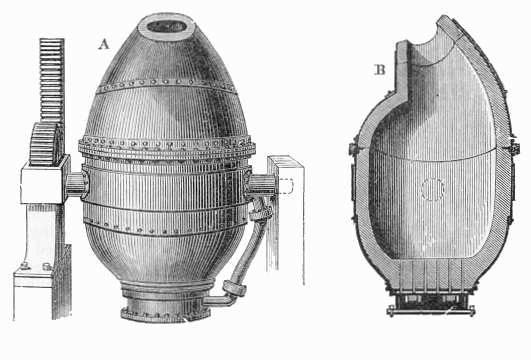
Bessemer converter
(Wiki Image Public Domain, https://commons.wikimedia.org/w/index.php?curid=91836)
Andrew Carnegie’s life is a quintessential “rags-to-riches” story, tracing his journey from a poor immigrant to one of the wealthiest and most influential figures of the Gilded Age.
From Dunfermline to Allegheny
Andrew Carnegie was born in Dunfermline, Scotland, in 1835. His father was a skilled weaver, but the Industrial Revolution and the rise of steam-powered looms made his trade obsolete, plunging the family into poverty. Seeking a better life, the Carnegies immigrated to the United States in 1848 and settled in Allegheny, Pennsylvania (now part of Pittsburgh).
At just 13 years old, Carnegie began working as a bobbin boy in a cotton mill, earning a meager $1.20 a week. This experience of hard labor fueled his ambition to climb out of poverty. He soon moved on to a job as a telegraph messenger, a role that proved to be a pivotal turning point.
The Telegraph and the Railroad: Ladders of Success 🪜
Working for the O’Reilly Telegraph Company, Carnegie quickly distinguished himself with his incredible memory and work ethic. He memorized the streets and businesses of Pittsburgh and could recognize the sounds of incoming messages by ear. This caught the attention of Thomas A. Scott, a superintendent at the Pennsylvania Railroad, who hired Carnegie as his personal telegraph operator and private secretary in 1853.
Under Scott’s mentorship, Carnegie received an invaluable education in business and management. He learned how to run a complex organization, manage finances, and make critical decisions. His time at the railroad was his “business school,” and he rose rapidly through the ranks.
It was also during this period that Carnegie made his first savvy investments. With Scott’s guidance, he purchased shares in the Adams Express Company and the Woodruff Sleeping Car Company. The dividends from these investments provided him with a second stream of income and his first taste of the power of capital.
The Pivot to Iron and Steel 🌉
After the Civil War, Carnegie saw that the future lay in iron and steel. He recognized that iron bridges were replacing wooden bridges and that the nation’s rapidly expanding railroad network would require immense quantities of steel rails.
He resigned from the railroad in 1865 to focus on his ventures, founding several iron and bridge companies. His key strategy was vertical integration—controlling every step of the manufacturing process. He bought iron ore fields, coal mines, and transportation lines to ensure a steady and cheap supply of raw materials for his mills.
His defining move came in the 1870s when he adopted the Bessemer process for mass-producing high-quality steel cheaply. While others were hesitant to invest in the new technology, Carnegie went all in, building the massive Edgar Thomson Steel Works near Pittsburgh. This plant, which opened in 1875, was designed for maximum efficiency and scale, allowing him to undercut his competitors dramatically.
By constantly reinvesting profits into better technology, driving down costs, and consolidating his control over the entire supply chain, Carnegie built an industrial empire. By the 1890s, the Carnegie Steel Company was the largest and most profitable steel enterprise in the world, and Andrew Carnegie was one of the wealthiest men in history.
Andrew Carnegie: The Steel Empire
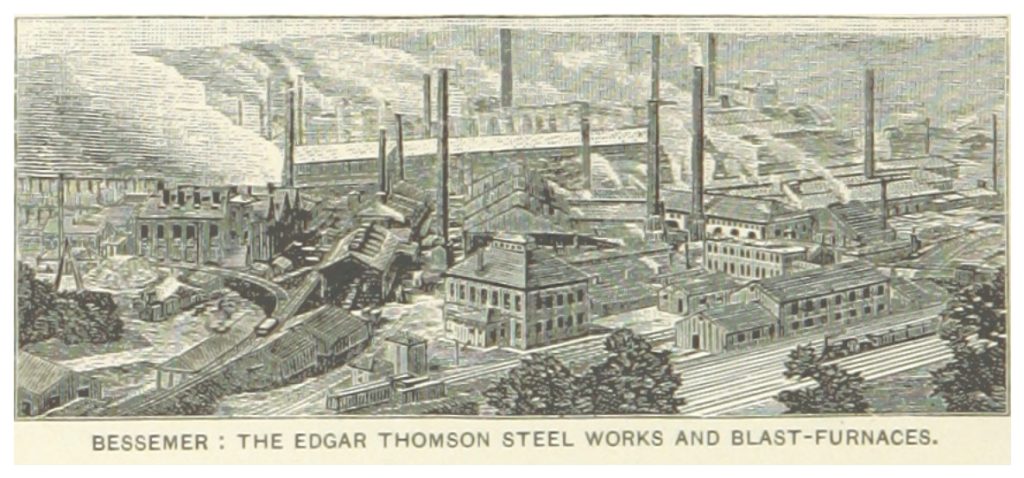
The Edgar Thomson Steel Works and Blast-Furnaces in Braddock, Pennsylvania (1891)
(Wiki Image By This file is from the Mechanical Curator collection, a set of over 1 million images scanned from out-of-copyright books and released to Flickr Commons by the British Library. View image on FlickrView all images from bookView catalogue entry for book., Public Domain, https://commons.wikimedia.org/w/index.php?curid=33557209)
Andrew Carnegie built his steel empire by relentlessly focusing on efficiency, technology, and controlling every aspect of the production process. His company, Carnegie Steel, became the largest and most profitable industrial enterprise in the world.
The Strategy: Efficiency and Integration
After leaving the Pennsylvania Railroad, Carnegie dedicated himself to the iron and steel industry. His core business philosophy revolved around two key principles:
- Constant Reinvestment in Technology: Carnegie was an early and enthusiastic adopter of the Bessemer process, a new method for mass-producing high-quality steel cheaply and efficiently. While competitors hesitated, he built the massive Edgar Thomson Steel Works in the 1870s, specifically designed to leverage this new technology. He was famous for his motto, “Watch the costs, and the profits will take care of themselves,” constantly scrapping old machinery for new, more efficient equipment.
- Vertical Integration: Carnegie’s true genius lay in his mastery of vertical integration. He sought to own and control every single step of the steelmaking process. His company acquired:
- Raw Materials: Iron ore mines in the Mesabi Range of Minnesota and coal fields in Pennsylvania.
- Transportation: A fleet of ships to carry ore across the Great Lakes and miles of railroad to connect the mines to the mills.
- Manufacturing: A network of the most advanced steel mills in the world.
This “ore to finished steel” control meant Carnegie Steel was not dependent on outside suppliers and could maintain ruthlessly low production costs, allowing it to undercut all competitors.
You can learn more about how Carnegie used vertical integration in his steel business by watching this video: How Did Carnegie Use Vertical Integration?
The Homestead Strike: A Dark Chapter
The relentless drive for efficiency came at a human cost. In 1892, a bitter labor dispute erupted at the company’s flagship Homestead Steel Works in Pennsylvania. While Carnegie was in Scotland, his manager, Henry Clay Frick, took a hard line against the unionized workers who were protesting wage cuts.
Frick locked the workers out and hired thousands of non-union laborers, bringing in armed Pinkerton guards to protect them. The resulting confrontation was a bloody battle, leaving at least ten men dead. The strike was ultimately broken, and it became a major stain on Carnegie’s reputation, revealing the harsh labor practices that underpinned his industrial success.
Sale and the Creation of U.S. Steel
By the turn of the century, Andrew Carnegie dominated the steel industry. His company’s profits had skyrocketed, reaching $40 million in 1900 alone (equivalent to well over $1 billion today).
Ready to retire and focus on philanthropy, Carnegie sought to sell his empire. The powerful financier J.P. Morgan, who envisioned creating a colossal steel trust, was the buyer. In 1901, in a deal famously scribbled on a piece of paper, Morgan agreed to buy Carnegie Steel for the astronomical sum of $480 million (making Carnegie the richest man in the world).
Morgan then merged Carnegie Steel with several other steel companies to create U.S. Steel, the first billion-dollar corporation in history. This marked the end of Andrew Carnegie’s reign over the steel industry and the beginning of his new career as a full-time philanthropist.
Andrew Carnegie: The “Gospel of Wealth” and Philanthropy
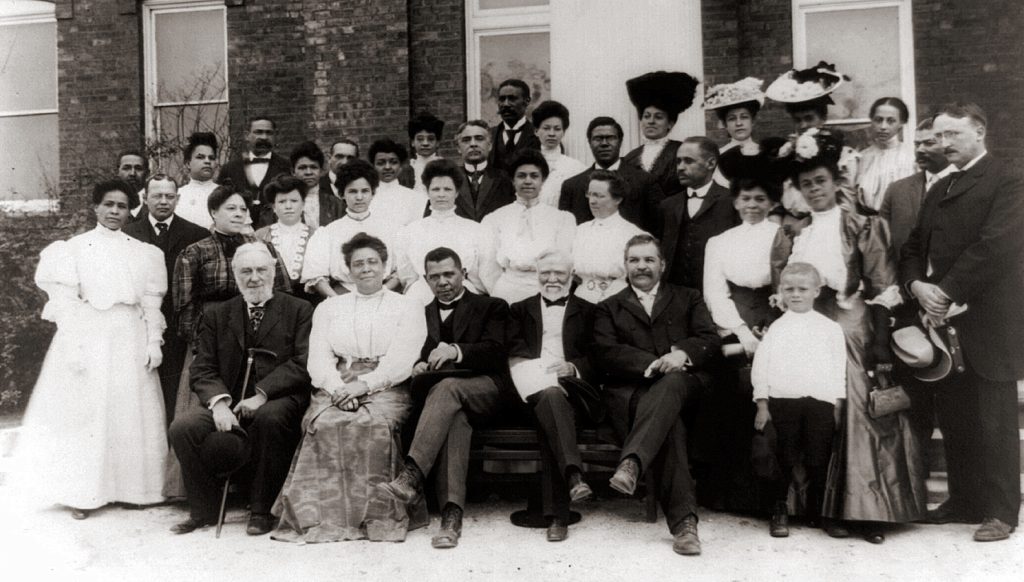
Carnegie with Black American leader Booker T. Washington (front row, center) in 1906 while visiting Tuskegee Institute
(Wiki Image By Frances Benjamin Johnston – This image is available from the United States Library of Congress’s Prints and Photographs division under the digital ID cph.3a10455.This tag does not indicate the copyright status of the attached work. A normal copyright tag is still required. See Commons:Licensing., Public Domain, https://commons.wikimedia.org/w/index.php?curid=5869899)
Andrew Carnegie’s “Gospel of Wealth” was his philosophy that the rich had a moral duty to use their fortunes to advance social progress. After selling his steel empire, he dedicated his life to this cause, giving away the vast majority of his wealth in one of the greatest acts of philanthropy in history.
The “Gospel of Wealth” 📖
In 1889, Carnegie published an article titled “Wealth” (later known as “The Gospel of Wealth”) that laid out his core beliefs on the responsibilities of the wealthy. He argued that the “man who dies thus rich dies disgraced.”
His “Gospel” proposed that the fortunes of industrialists should not be passed down to heirs or given to the state upon death. Instead, he believed the wealthy should use their superior wisdom and experience to administer their fortunes for the public good during their lifetimes. He saw this as the most effective way to address societal problems and create lasting ladders of opportunity for the less fortunate.
“Ladders, Not Handouts”
Carnegie’s philanthropy was not about simple charity or handouts. He believed in providing the tools for people to improve themselves. His most famous and widespread contribution was the funding of public libraries.
He spent over $56 million to establish 2,509 libraries throughout the English-speaking world. His condition for funding was that the local community had to provide the land and agree to maintain and operate the library, ensuring it was a partnership, not a gift. He saw free access to books and knowledge as the ultimate tool for self-improvement.
A Legacy of Institutions
Beyond libraries, Carnegie’s giving was vast and created numerous enduring institutions dedicated to education, science, and world peace. The total value of his philanthropy exceeded $350 million (billions in today’s dollars).
Major institutions he founded include:
- The Carnegie Institute of Technology (now part of Carnegie Mellon University) in Pittsburgh provided technical training.
- The Carnegie Institution for Science in Washington, D.C., funds original scientific research.
- The Carnegie Endowment for International Peace aims to promote understanding and prevent armed conflict between nations.
- The Carnegie Hero Fund Commission honors and provides financial support to civilians who risk their lives to save others.
- Carnegie Hall in New York City, which he built to be one of the world’s premier performance venues.
Andrew Carnegie’s philanthropic legacy is a direct reflection of his “Gospel.” He practiced what he preached, using his immense fortune not for personal indulgence but to create a lasting infrastructure of opportunity and knowledge for generations to come.
The following video explains Carnegie’s “Gospel of Wealth” and its historical context.
The Gospel of Wealth Explained
Andrew Carnegie Civilization
Andrew Carnegie: Advisors & Influencers
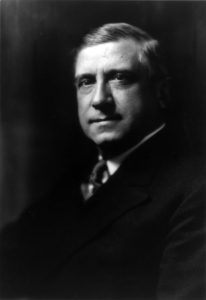
Schwab in 1901 at age 39
(Wiki Image By Unknown author – Google Books – (1901). “Harnessing The Sun”. The World’s Work: p. 616. New York: Doubleday, Page, and Company., Public Domain, https://commons.wikimedia.org/w/index.php?curid=4373214)
Andrew Carnegie, like any successful industrialist, relied on a team of trusted advisors, partners, and employees to build and manage his steel empire. His most influential advisors were Thomas A. Scott, his early mentor, and his two top executives, Henry Clay Frick and Charles M. Schwab.
Thomas A. Scott: The Mentor
Thomas A. Scott was a superintendent at the Pennsylvania Railroad who became Carnegie’s first and most crucial mentor. Scott hired a young Carnegie as his telegrapher and assistant, and under Scott’s guidance, Carnegie learned the ins and outs of the railroad business. Scott not only gave Carnegie a salary and a powerful position, but also showed him the value of smart investing. Scott allowed Carnegie to make his first investments, often through insider deals, that provided the initial capital for his later ventures.
Henry Clay Frick: The Tough Partner
Henry Clay Frick was a coke industrialist who became Carnegie’s business partner and chairman of the Carnegie Steel Company. Frick was a brilliant and ruthless businessman who shared Carnegie’s ambition and drive to dominate the industry. He was known for his cold and unwavering stance against labor unions, a stance that ultimately led to the bloody Homestead Strike of 1892. While Carnegie was on vacation in Scotland, Frick’s decision to use armed Pinkerton agents to break the strike severely damaged Carnegie’s public image and led to a bitter, permanent feud between the two men.
Charles M. Schwab: The Operational Genius
Charles M. Schwab was a protege of Carnegie who rose from a stake driver at one of his mills to become president of the Carnegie Steel Company at just 35 years old. Schwab was an operational genius who was respected by both management and labor. He was instrumental in implementing new technologies and improving efficiency, playing a key role in the company’s success. It was Schwab who secretly negotiated the sale of Carnegie Steel to J.P. Morgan in 1901, a deal that created U.S. Steel and made Carnegie the wealthiest man in the world. Schwab then became the first president of the new company.
Andrew Carnegie: Worldwide Steel Economy
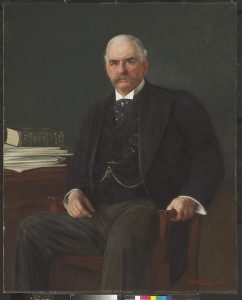
Portrait of J. P. Morgan; Cutthroat Capitalist –Oil on canvas by Fedor Encke, 1903
(Wiki Image By Fedor Encke (1851-1926) – http://www.askart.com/artist/Fedor_Encke/103063/Fedor_Encke.aspx, Public Domain, https://commons.wikimedia.org/w/index.php?curid=68340521)
Yes, Andrew Carnegie’s steel empire had a profound impact on the worldwide steel economy, fundamentally shifting the balance of industrial power.
Andrew Carnegie didn’t just conquer the American steel market; his obsessive focus on efficiency and low costs allowed him to outcompete foreign producers, making the United States the dominant force in the global steel industry.
Overtaking the Global Leader
For most of the 19th century, Great Britain was the world’s leading steel producer. However, Carnegie’s adoption of advanced technology, like the Bessemer process, and his mastery of vertical integration allowed Carnegie Steel to produce steel at a speed and scale that British and other European manufacturers could not match.
By the 1890s, Carnegie was able to produce steel more cheaply than his rivals in Britain and Germany. He famously boasted that he could roll steel in Pittsburgh and ship it past the mills in England to sell it at a profit.
The “American Invasion” 🇺🇸
The flood of cheap, high-quality American steel onto the world market at the turn of the century was dubbed the “American Invasion” by the European press. Carnegie Steel’s low prices forced foreign competitors to slash their own prices and modernize their operations to simply survive.
This had several key impacts:
- Shifting Economic Power: The United States surpassed Great Britain as the world’s number one steel producer, a clear sign of America’s emergence as a global industrial superpower.
- Driving Modernization: Carnegie’s success served as a wake-up call for European steelmakers, who were compelled to adopt more efficient, American-style mass-production techniques.
- Global Infrastructure Growth: The availability of cheaper steel from companies like Carnegie’s fueled a worldwide boom in railroad construction, shipbuilding, and the erection of bridges and skyscrapers.
When Andrew Carnegie sold his company to J.P. Morgan in 1901, leading to the creation of the even more powerful U.S. Steel, the American dominance of the worldwide steel economy was solidified. Carnegie’s relentless drive for efficiency had not only built his own fortune but had also fundamentally reshaped the industrial landscape of the entire world.
Andrew Carnegie: Geopolitics
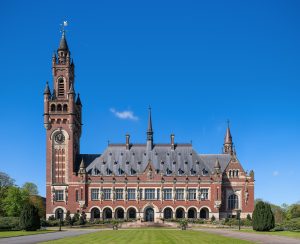
The Peace Palace, The Hague
(Wiki Image By Thomas Wolf, www.foto-tw.de, CC BY-SA 3.0 de, https://commons.wikimedia.org/w/index.php?curid=171376864)
Yes, Andrew Carnegie was deeply involved in the geopolitics of his era, using his immense wealth and influence to advocate for world peace and oppose American imperialism.
An Advocate for Peace ☮️
Andrew Carnegie was one of the most prominent peace activists of his time. He believed that industrial capitalism had made the world so interconnected that war had become obsolete and barbaric. He dedicated a significant portion of his fortune to building institutions that he hoped would prevent future conflicts.
His most notable contributions to the peace movement include:
- The Hague Palace of Peace: He donated $1.5 million (an enormous sum at the time) to build this courthouse in the Netherlands to house the Permanent Court of Arbitration, an early international body for resolving disputes between nations.
- The Carnegie Endowment for International Peace: Established in 1910 with a $10 million endowment, its mission was to hasten the abolition of war, which Carnegie saw as the “foulest blot upon our civilization.”
He also engaged in personal diplomacy, corresponding with world leaders like President Theodore Roosevelt and German Kaiser Wilhelm II, urging them to embrace arbitration and disarmament.
A Staunch Anti-Imperialist
Carnegie was a vocal opponent of American imperialism. He believed it was a betrayal of democratic principles and a costly, immoral endeavor. His most significant stand was against the Spanish-American War and the subsequent U.S. annexation of the Philippines.
- The Anti-Imperialist League: He was a leading member and financial supporter of this organization, which campaigned against the colonization of the Philippines.
- A Bold Offer: In a famous gesture, Carnegie offered to buy the Philippines’ independence from the U.S. government for $20 million so the Filipino people could establish their nation. The offer was rejected.
Carnegie’s anti-imperialist views put him at odds with many of the expansionist politicians of his day, including Theodore Roosevelt. He saw the quest for overseas colonies as a dangerous diversion from domestic progress and a step backward for civilization.
In an age of rising nationalism and empire-building, Andrew Carnegie used his global platform to champion a different vision of world order—one based on international law, arbitration, and peace. While his ultimate dream of ending war was not realized, his efforts laid a crucial foundation for the development of international institutions and peace advocacy in the 20th century.
Andrew Carnegie: Law
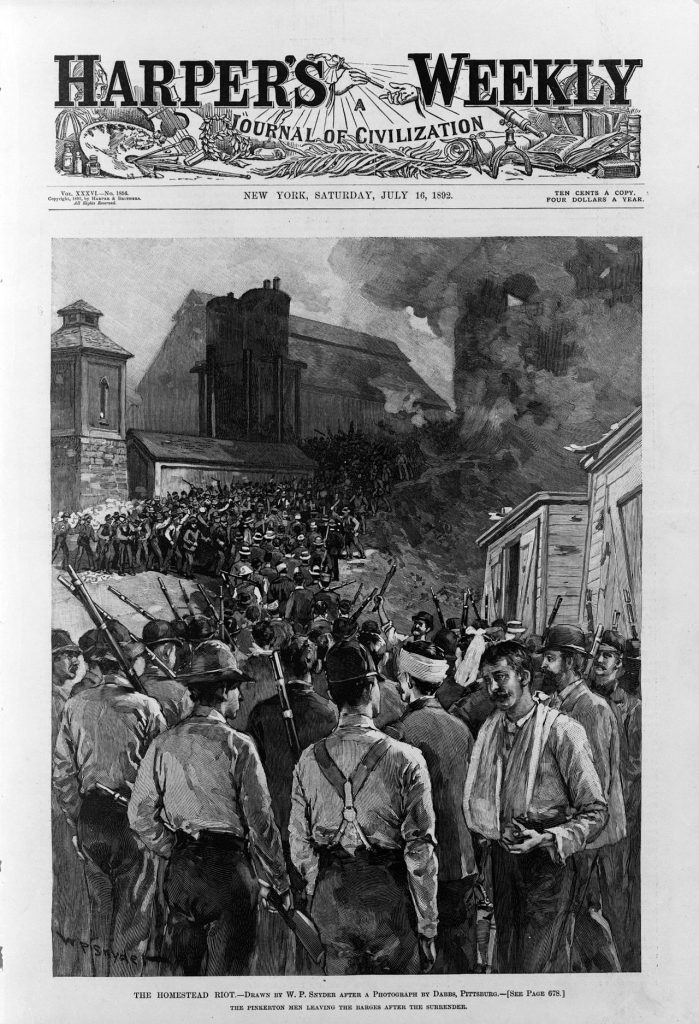
Pinkerton men leave the barges after their surrender during the Homestead strike.
(Wiki Image By Drawn by W.P. Snyder after a photograph by Dabbs, Pittsburgh. – This image is available from the United States Library of Congress’s Prints and Photographs division under the digital ID cph.3c26046.This tag does not indicate the copyright status of the attached work. A normal copyright tag is still required. See Commons:Licensing., Public Domain, https://commons.wikimedia.org/w/index.php?curid=607502)
Andrew Carnegie was not a lawyer, but his business empire and personal philosophy were deeply entangled with the major legal battles and developments of his time, from labor law to the rise of antitrust legislation.
Labor Law and the Homestead Strike
Carnegie’s most infamous legal clash was the 1892 Homestead Strike. When contract negotiations at the Homestead Steel Works failed, Carnegie’s manager, Henry Clay Frick, locked out the union workers. The company’s use of armed Pinkerton guards to protect strikebreakers led to a bloody battle, and the governor ultimately sent in the state militia to crush the strike.
From a legal standpoint, the event was a landmark victory for corporate power. The state’s intervention on behalf of the company demonstrated that the law was a powerful tool for breaking unions. Though Frick and other managers were charged with murder, they were acquitted, while union leaders faced charges that destroyed the union’s effectiveness. The strike showcased how the legal system in the Gilded Age overwhelmingly favored capital over labor.
Antitrust Law and the Age of Monopolies
Carnegie Steel’s dominance was a key example of the massive industrial trusts that emerged after the Civil War. His company controlled every aspect of steel production, allowing it to crush competitors and control prices. This concentration of economic power sparked widespread public fear and led to a major legal and political movement.
The U.S. government responded by passing the Sherman Antitrust Act of 1890, the nation’s first federal law targeting monopolies. While the law was not used to break up Carnegie Steel itself, his company was precisely the kind of trust the act was designed to regulate. The creation of the even larger U.S. Steel trust after Carnegie sold his company further fueled the antitrust movement, leading to landmark Supreme Court cases against other giants like Standard Oil and American Tobacco. Carnegie’s business practices, therefore, were a direct catalyst for the development of modern American antitrust law.
The Law as a Tool for Philanthropy
In his later life, Carnegie used corporate and trust law to build his philanthropic legacy. To enact his “Gospel of Wealth,” he required a sophisticated legal framework. He established numerous foundations and institutions, such as the Carnegie Corporation of New York and the Carnegie Endowment for International Peace.
Each of these entities was a legal corporation or trust, established with a specific charter and bylaws to ensure his fortune would be managed and distributed according to his wishes long after his death. This required a team of lawyers to create a durable legal architecture for his vision of giving, demonstrating his use of the law not just for business, but as the essential tool for shaping his enduring legacy.
Andrew Carnegie: Political People
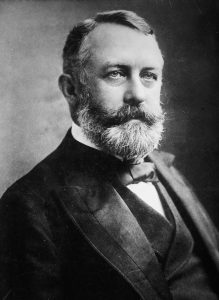
Henry Clay Frick
(Wiki Image By Bain News Service – This image is available from the United States Library of Congress’s Prints and Photographs divisionunder the digital ID ggbain.07131.This tag does not indicate the copyright status of the attached work. A normal copyright tag is still required. See Commons:Licensing., Public Domain, https://commons.wikimedia.org/w/index.php?curid=700199)
Andrew Carnegie had a complex relationship with politicians, primarily centered on his own beliefs about economic and social systems. While he did not run for political office, his immense wealth and strong opinions gave him a platform to influence public discourse and, indirectly, policy.
Early Political Influences
Carnegie’s early political views were shaped by his upbringing in Scotland, where his family was involved in the Chartist movement. This movement advocated for political reforms and suffrage for the working class. This early exposure to democratic ideals and a belief in the rights of working people influenced his public stance for much of his life.
The “Gospel of Wealth”
Carnegie’s most significant political and social statement was his 1889 essay, “The Gospel of Wealth.” In it, he argued against socialism and for a form of capitalism in which the wealthy had a moral duty to use their fortunes for the benefit of society. He supported policies such as progressive taxation and a heavy estate tax on the rich. He believed that the government should not interfere with the natural accumulation of wealth but should ensure that it was wisely distributed for the public good after a person’s death.
Labor Relations and Government Intervention
Carnegie’s views on the role of government were often contradictory. While he publicly supported workers’ rights to unionize in other industries, his company, under the management of his partner Henry Clay Frick, brutally crushed the Homestead Strike of 1892. When the Pennsylvania state militia was called in to restore order, it represented a form of government intervention that protected the company’s interests over those of the workers. This event severely damaged Carnegie’s public reputation as a champion of the working man and highlighted the tension between his business practices and his public philosophy.
Andrew Carnegie: Rich and Poor
Andrew Carnegie had a complex and at times contradictory view of the relationship between the rich and the poor. He believed that the vast gap between them was a natural and even beneficial outcome of industrial capitalism, but also that the wealthy had a moral obligation to use their fortunes to improve society. His philosophy is most famously articulated in his 1889 essay, “The Gospel of Wealth.”
The Gospel of Wealth: A Moral Obligation 🙏
Carnegie argued that the amassing of great fortunes by a few was an inevitable result of capitalism and industrial progress. He believed this inequality was not a problem to be solved but a condition to be managed. The wealthy, in his view, were merely “trustees” of their fortunes and had a moral duty to use their surplus wealth for the good of the community. He famously wrote, “The man who dies thus rich, dies disgraced.” This belief led him to dedicate the last two decades of his life to philanthropy, giving away almost 90% of his fortune.
Wise Giving vs. Indiscriminate Charity 💡
Carnegie was a strong proponent of what he called “wise giving,” which meant using wealth to create opportunities for the poor to improve their own lives, rather than simply giving them money. He believed that indiscriminate charity was harmful because it could encourage idleness and dependency. His philanthropy, therefore, focused on building institutions that would provide tools for self-improvement. This included funding more than 2,500 public libraries, establishing Carnegie Mellon University, and creating educational and scientific foundations.
Contradictions in Practice 🧐
While Carnegie’s philosophy on wealth was progressive for its time, his business practices were often at odds with his public views. His relentless pursuit of cost-cutting and efficiency led to long hours, low wages, and dangerous working conditions in his steel mills. His company’s brutal response to the Homestead Strike of 1892, where armed Pinkerton agents were used to break a union strike, severely damaged his reputation as a champion of the working man and highlighted the stark contrast between his rhetoric and the reality of his business.
Andrew Carnegie: Science

(Wiki Image By CMU_from_36th_floor.jpg: Chloe Fan from Wellesley, USAderivative work: Crazypaco (talk) – CMU_from_36th_floor.jpg, CC BY-SA 2.0, https://commons.wikimedia.org/w/index.php?curid=10873523)
Yes, Andrew Carnegie was a fervent believer in the power of science, using it to build his industrial empire and later becoming one of history’s greatest patrons of scientific research and education.
Science in the Steel Mills 🏭
Carnegie’s business success was built on a deep appreciation for technology and scientific methods. He wasn’t an inventor, but he was a brilliant and ruthless implementer of cutting-edge science.
- The Bessemer Process: Carnegie was one of the first in America to fully embrace the Bessemer process. This revolutionary technique allowed for the mass production of high-quality, inexpensive steel from iron. By investing heavily in this new technology, he could produce steel faster, better, and cheaper than anyone else.
- Chemistry in Manufacturing: Uniquely for his time, Carnegie hired professionally trained chemists to work in his mills. While his competitors often relied on guesswork and tradition, Carnegie’s chemists analyzed the precise chemical composition of each batch of steel, ensuring a consistent and superior product. This scientific approach to quality control gave him a massive competitive advantage.
A Patron of Scientific Discovery 🔬
After retiring, Carnegie dedicated his fortune to advancing human knowledge, with science as a cornerstone of his philanthropy. He believed in funding both education to train new scientists and pure research to explore the unknown.
- Carnegie Institution for Science: In 1902, he established this institution in Washington, D.C., with a massive $10 million grant. Its mission was not to focus on practical, profitable inventions, but to support fundamental, “blue-sky” research by exceptional individuals. It has since funded groundbreaking work in astronomy, biology, and geology.
- Carnegie Institute of Technology: He founded what is now Carnegie Mellon University in Pittsburgh to provide top-tier technical education for the working class, ensuring a new generation of expertly trained engineers and scientists.
- Dinosaurs and Stars: His funding reached all corners of the scientific world. He sponsored the expedition that discovered the skeleton of a massive dinosaur, which was named Diplodocus carnegii in his honor. He also funded the construction of the Mount Wilson Observatory in California, which became one of the world’s leading astronomical research centers.
The Philosophy of “Scientific” Progress
Carnegie’s belief in science extended to his social philosophy. He was a great admirer of the English philosopher Herbert Spencer, who coined the term “survival of the fittest.”
Carnegie applied this concept, known as Social Darwinism, to his own life and society. He believed that the fierce competition of capitalism was a natural law that rewarded the most efficient and innovative, thereby ensuring human progress. However, he also thought this harsh “survival” had to be balanced by a moral duty. For Carnegie, his “Gospel of Wealth” was the necessary second act: the “fittest” who survived the economic jungle had a scientific and moral obligation to use their wealth to create “ladders”—like libraries and universities—for others to climb, thus continuing the upward march of civilization.
Andrew Carnegie: Technology
Yes, Andrew Carnegie’s success was fundamentally driven by his strategic and ruthless implementation of new technology.
Andrew Carnegie was not an inventor, but his genius lay in identifying and adopting the most advanced technology to mass-produce steel faster, cheaper, and more efficiently than anyone else in the world.
The Bessemer Process: The Game Changer
The most critical technology Carnegie harnessed was the Bessemer process. While visiting England in the 1870s, Carnegie witnessed this revolutionary method, which involved blowing air through molten iron to burn off impurities and create high-quality steel rapidly.
He immediately understood its potential and brought the technology back to America. He built his new mills, like the massive Edgar Thomson Steel Works, specifically around giant Bessemer converters. This allowed him to dramatically increase production volume while slashing costs, giving him an insurmountable edge over smaller, less advanced competitors still using older, slower methods.
A Philosophy of Constant Upgrades
Carnegie’s famous motto was, “Watch the costs, and the profits will take care of themselves.” For him, this meant a relentless pursuit of efficiency through technology. He was famous for his willingness to scrap machinery, even if it was still new, for a more advanced model that could offer even a slight improvement in cost or output.
While his competitors might try to squeeze a few more years out of their existing equipment, Carnegie was continually reinvesting his profits into the latest innovations. As technology evolved, he also adopted the open-hearth furnace, which allowed for the production of even higher-grade steel for things like structural beams and armor plate.
The Science of Steel
Beyond just big machines, Carnegie was one of the first industrialists to apply science directly to the manufacturing floor. He hired professional chemists and metallurgists to analyze the precise chemical composition of his raw materials and finished products. This moved steelmaking from an art based on guesswork to a precise science. By controlling the chemistry, he could guarantee a consistent, high-quality product, which was crucial for building reliable rails, bridges, and skyscrapers.
Technology from Bridges to Rails
Carnegie’s focus on technology extended beyond the mill.
- Keystone Bridge Company: Early in his career, he was a leader in this company, which championed the move from heavy, brittle iron bridges to structures built with stronger, lighter, and more reliable steel.
- Railroads: His early career at the Pennsylvania Railroad gave him an intimate understanding of the nation’s largest technological system. He knew firsthand the massive and growing demand for durable steel rails and built his empire to meet that demand.
For a deeper look into the technology that fueled Carnegie’s empire, this video explores his business strategy of vertical integration.
How Andrew Carnegie Changed Steel Production
Cornelius Vanderbilt (1794–1877): The Railroad Baron
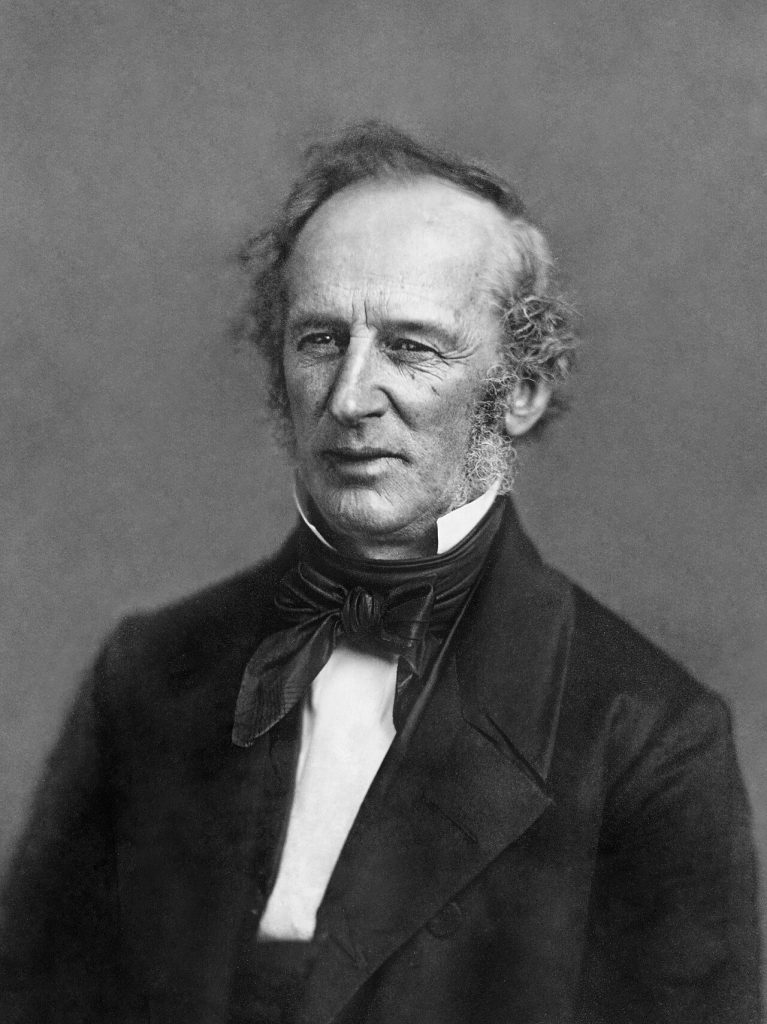
Vanderbilt c. 1844–1860
(Wiki Image By Produced by Mathew Brady’s studio, restored by Michel Vuijlsteke – This image is available from the United States Library of Congress’s Prints and Photographs divisionunder the digital ID cph.3a11569.This tag does not indicate the copyright status of the attached work. A normal copyright tag is still required. See Commons:Licensing., Public Domain, https://commons.wikimedia.org/w/index.php?curid=6497952)
Cornelius Vanderbilt Quotes
Cornelius Vanderbilt was known for his blunt, no-nonsense approach to business and life. His quotes reflect his single-minded ambition, fierce competitiveness, and disregard for sentimentality in business matters.
Here are some of his most famous and insightful quotes:
On Business and Competition:
- “You have undertaken to cheat me. I won’t sue you, for the law is too slow. I’ll ruin you.”
- “What do I care about law? Ain’t I got the power?”
- “I don’t care half so much about making money as I do about making my point, and coming out ahead.”
- “There is no friendship in trade.”
- “I am not afraid of my enemies, but by God, you must look out when you get among your friends.”
On Success and Wealth:
- “Any fool can make a fortune; it takes a man of brains to hold onto it.”
- “I have been insane on the subject of moneymaking all my life.”
- “If I had learned education, I would not have had time to learn anything else.”
- “The more of it (money) one has the more one wants.”
- “The public be damned!” (This quote, though often attributed to him, was actually said by his son, William Henry Vanderbilt, but it reflected the family’s general attitude toward public opinion and government regulation at the time.)
On Personal Philosophy:
- “My mother said I must always be intolerant of ignorance but understanding of illiteracy. That some people, unable to go to school, were more educated and more intelligent than college professors.”
- “Never be a minion, always be an owner.”
A Chronology of Cornelius Vanderbilt’s Life
Cornelius Vanderbilt, often called “the Commodore,” was a dominant figure in American transportation. His life can be divided into two main phases: his early years in shipping and his later, more powerful years as a railroad tycoon.
Early Life and Shipping Empire
- 1794: Cornelius Vanderbilt is born in Port Richmond, Staten Island, New York, to a family of modest means.
- 1810: At age 16, he buys his first boat with a loan from his mother and starts a small ferry service transporting goods and people between Staten Island and Manhattan.
- 1818: He goes to work for Thomas Gibbons, a steamboat operator, where he learns the steamboat business and becomes a key figure in the legal battle that leads to the landmark Supreme Court case Gibbons v. Ogden. The case breaks up a state-granted monopoly and opens up competition, benefiting Vanderbilt.
- 1829: He leaves Gibbons to start his own steamboat company, building a dominant position in the Hudson River trade through fierce competition and rate wars.
- 1850s: Vanderbilt establishes a steamship line to Central America, capitalizing on the California Gold Rush. His “accessory transit company” becomes a highly profitable route for prospectors heading to the West Coast.
Railroad King and Later Years
- 1860s: Vanderbilt gradually shifts his focus from shipping to railroads, sensing that they are the future of American transportation. He begins buying stock in key rail lines.
- 1867: He takes control of the New York Central Railroad, a crucial line that connects New York City to Chicago. He consolidates this and other rail lines into a vast, interconnected network.
- 1869: He builds the Grand Central Depot in Manhattan, the precursor to Grand Central Terminal, to serve as the hub for his railroad empire.
- 1873: Vanderbilt and his son William Henry consolidate several major rail lines, creating the most powerful railroad system in the country.
- 1877: Cornelius Vanderbilt dies at the age of 82, leaving behind a fortune estimated at over $100 million, the vast majority of which he leaves to his son.
- 1873: Vanderbilt makes his most significant philanthropic gift, a $1 million donation to found Vanderbilt University in Nashville, Tennessee.
Cornelius Vanderbilt YouTube Video
The Most BRUTAL Businessman In History
- Views: 1.4 Million
- Channel: MagnatesMedia
- Link: http://www.youtube.com/watch?v=KXFwnXEk6N4
- Description: This popular video focuses on the ruthless and competitive business strategies that made Vanderbilt a titan of industry.
The Men Who Built America: The Rise of Cornelius Vanderbilt | History
- Views: 478,000
- Channel: HISTORY
- Link: http://www.youtube.com/watch?v=H9Gq-eKO6SQ
- Description: A short, dramatic clip from the popular HISTORY channel series that introduces Cornelius Vanderbilt and his powerful impact on America.
Cornelius Vanderbilt: America’s First Tycoon
- Views: 404,000
- Channel: Biographics
- Link: http://www.youtube.com/watch?v=lUk65r2h6Zk
- Description: This video provides a comprehensive biography of Vanderbilt, detailing his rise from a ferry operator to the richest man in America.
Secrets of The Vanderbilt Family (Documentary)
- Views: 294,000
- Channel: Old Money Documentaries
- Link: http://www.youtube.com/watch?v=2KtrLEGOFtQ
- Description: A feature-length documentary exploring the history of the entire Vanderbilt dynasty, starting with the Commodore’s creation of the family fortune.
The Vanderbilts Who Lost Everything (Documentary)
- Views: 106,000
- Channel: Old Money Documentaries
- Link: http://www.youtube.com/watch?v=lGikOtcvWB8
- Description: This documentary tells the story of how his descendants eventually squandered the immense fortune built by Cornelius Vanderbilt.
Cornelius Vanderbilt History
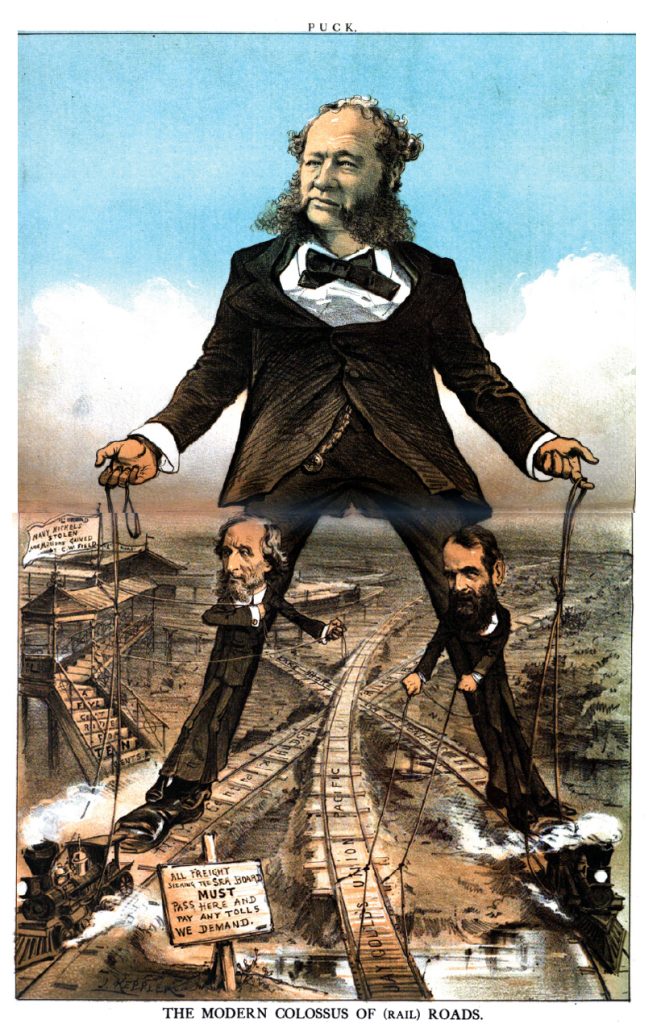
1879 cartoon depicting William Vanderbilt as “The Modern Colossus of (Rail) Roads”
(Wiki Image By Joseph Keppler – “The Modern Colossus of (Rail) Roads”. Puck (magazine), Vol. VI, No. 44, pp. 650–651., Public Domain, https://commons.wikimedia.org/w/index.php?curid=23813490)
Cornelius Vanderbilt, nicknamed “the Commodore,” was a quintessential American self-made man who rose from humble beginnings to become one of the wealthiest and most powerful figures of the 19th century. He built two separate empires, first in shipping and then in railroads, fundamentally shaping the course of American transportation and commerce.
Early Life and Shipping Empire 🚢
Born in 1794 in Staten Island, New York, Cornelius Vanderbilt possessed a relentless drive and a keen business sense from a young age. At 16, he borrowed $100 to start his own ferry service, transporting passengers and freight between Staten Island and Manhattan. His motto was to run his business more efficiently and cheaply than his competitors, a ruthless strategy he would employ his entire life.
Vanderbilt was at the forefront of the shift from sail to steam power. He built a fleet of steamboats and aggressively challenged the powerful, state-sanctioned monopolies that controlled the waterways around New York. His legal battles contributed to the landmark 1824 Supreme Court decision in Gibbons v. Ogden, which broke the monopolies by establishing federal authority over interstate commerce, opening the industry to the competition that Vanderbilt would soon dominate.
During the California Gold Rush, he demonstrated his genius by creating a faster, cheaper route for prospectors, transporting them by ship to Nicaragua, across the isthmus by land, and then by another ship to San Francisco. This venture alone earned him millions.
The Pivot to Railroads 🚂
Already in his late 60s at the start of the Civil War, Vanderbilt foresaw that the future of American transportation lay not on water, but on rails. He began systematically liquidating his vast shipping interests and investing the capital into railroads.
He started by acquiring smaller lines, including the New York and Harlem Railroad, and eventually consolidated his control over the major lines entering New York City. By merging these into the powerful New York Central Railroad, he created a seamless and dominant network that controlled the flow of commerce from the Midwest to the nation’s financial capital. His competitive tactics were legendary, most notably during the “Erie War,” a bitter stock market battle for control of the Erie Railroad against rival financiers Jay Gould and Jim Fisk.
The crowning achievement of his railroad empire was the construction of Grand Central Depot in 1871. This massive and elegant terminal at the heart of Manhattan served as the central hub for his lines and stood as a monument to his power.
Final Years and Legacy
Unlike his Gilded Age contemporaries Andrew Carnegie and John D. Rockefeller, Vanderbilt was not a significant philanthropist. He was focused on the accumulation of wealth and the preservation of his empire. His one major act of giving came late in his life, when he donated $1 million to found Vanderbilt University in Nashville, Tennessee, a gesture intended to help heal the wounds of the Civil War.
When he died in 1877, Cornelius Vanderbilt was the richest man in America, leaving a fortune of over $100 million—more than was held in the U.S. Treasury at the time. He bequeathed the vast majority of it to his son, William Henry Vanderbilt, ensuring the family dynasty would continue. The Commodore’s legacy is that of the ultimate capitalist titan, a tough and visionary builder of empires who transformed American industry.
Cornelius Vanderbilt: Early Career: Shipping Empire
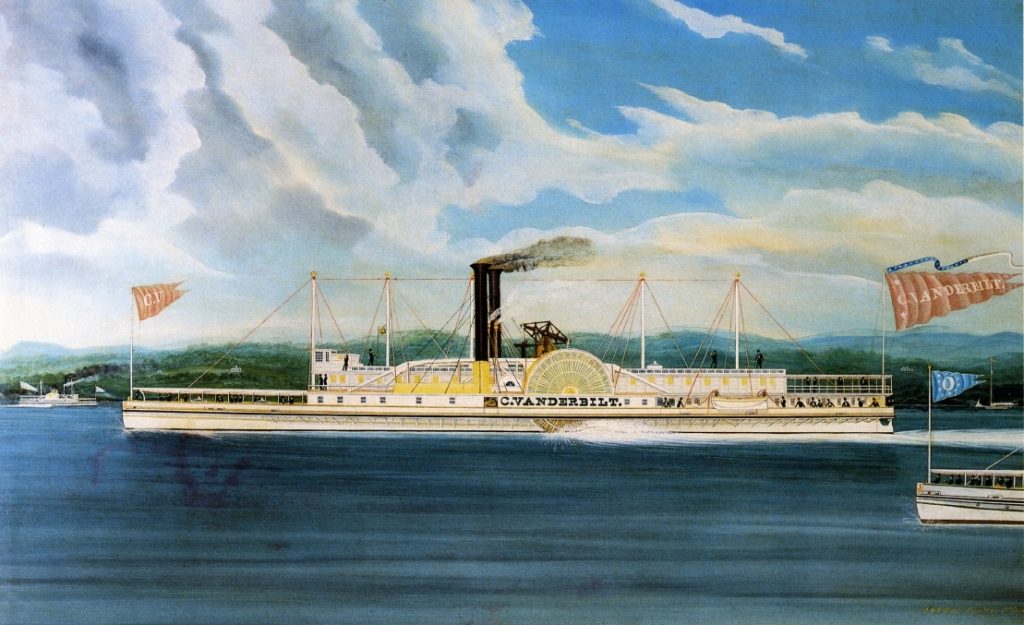
Vanderbilt, Hudson River steamer owned by Cornelius Vanderbilt (oil on canvas by James and John Bard)
(Wiki Image By James Bard – The Athenaeum: Home – info – pic, Public Domain, https://commons.wikimedia.org/w/index.php?curid=7798655)
Cornelius Vanderbilt, famously known as “the Commodore,” built his early fortune by dominating the shipping industry. From his humble beginnings as a ferryman, he leveraged fierce competition and strategic acquisitions to become a tycoon in both steamboats and ocean-going vessels.
Humble Beginnings and Early Success
Vanderbilt was born in 1794 on Staten Island, New York, to a family of modest means. He quit school at age 11 to work with his father, who operated a small ferry service. At just 16, he borrowed $100 from his mother to buy his own small boat and start his own freight and passenger service between Staten Island and Manhattan. Through hard work, reliability, and aggressive price-cutting, he quickly paid off the loan and expanded his fleet.
During the War of 1812, he secured a government contract to supply military outposts, which further grew his wealth.
The Rise of the Steamboat Empire
Vanderbilt saw the potential of the new steamboat technology and, in 1818, went to work for steamboat operator Thomas Gibbons. While working for Gibbons, he gained invaluable experience in managing a large-scale commercial operation. In 1829, with his own capital, he left to start his own steamboat company.
His strategy was simple yet brutal:
- Rate Wars: He would slash fares to an incredibly low price, making it impossible for his competitors to stay in business. He would then buy them out or receive a cash payment to move his business elsewhere.
- Superior Service: Vanderbilt offered faster and more luxurious service than his competitors.
Using these tactics, he came to dominate the steamboat business on the Hudson River and the Long Island Sound. By the 1840s, he owned more than 100 steamboats and was the largest employer in the United States.
The Gold Rush and Ocean-Going Vessels
When the California Gold Rush began in 1849, Vanderbilt saw another opportunity. He established the Accessory Transit Company, a steamship line that transported prospectors from New York to San Francisco via a quicker route through Nicaragua. This venture was a huge success, earning him over a million dollars a year at its peak. By the 1850s, he had earned his famous nickname “the Commodore” for his command of this vast shipping empire.
[The Maritime Years of Cornelius Vanderbilt] (https://www.youtube.com/watch?v=X0HfxK60tgA) provides a lecture by a historian on Vanderbilt’s early career and shipping empire.
Cornelius Vanderbilt: Mid-Career: The Railroad Tycoon
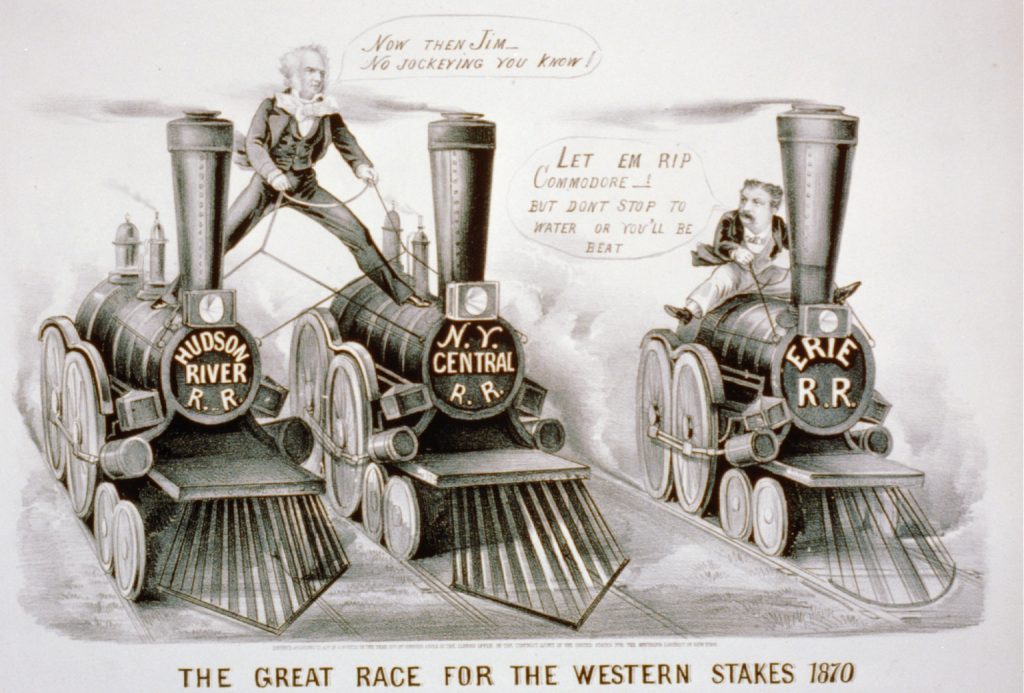
Cornelius Vanderbilt versus James Fisk Jr. in a famous rivalry with the Erie Railroad
(Wiki Image By Currier and Ives – This image is available from the United States Library of Congress’s Prints and Photographs divisionunder the digital ID pga.09040.This tag does not indicate the copyright status of the attached work. A normal copyright tag is still required. See Commons:Licensing., Public Domain, https://commons.wikimedia.org/w/index.php?curid=4930077)
Yes, in his mid-career, Cornelius Vanderbilt pivoted from shipping to become a dominant railroad tycoon.
Recognizing that railroads were surpassing shipping as the key to American transportation and commerce, Cornelius Vanderbilt, already in his late 60s, systematically shifted his focus and capital from the sea to the rails. He applied the same ruthless and brilliant tactics he had honed in the shipping industry to build a railroad empire that would become the backbone of his family’s immense fortune.
The Strategic Pivot to Railroads 🚂
During the Civil War, Vanderbilt saw the strategic importance of railroads and began to liquidate his shipping interests. He started by acquiring the New York and Harlem Railroad and the Hudson River Railroad. His initial goal was to consolidate control over the railroads entering New York City, the nation’s commercial heart.
A famous story illustrates his aggressive tactics: when rival railroad operators tried to short his Harlem Railroad stock, Vanderbilt bought up every available share, driving the price up and causing massive losses for the speculators who had bet against him. This move not only made him a fortune but also sent a clear message that he was a force to be reckoned with in this new arena.
Building a Cohesive Empire
Vanderbilt’s vision was to create a seamless and efficient rail network. He acquired and merged several key lines, including the New York Central Railroad, to connect New York City with the burgeoning Midwest. By consolidating these lines, he could run more direct and efficient routes for both passengers and freight, dominating the traffic into and out of New York.
His competitive battles were legendary, most notably the “Erie War.” Vanderbilt fought for control of the Erie Railroad against rival financiers Jay Gould and Jim Fisk. This conflict involved bribery of state legislators, stock manipulation, and a public relations war. While Vanderbilt ultimately failed to gain control of the Erie, the struggle highlighted the cutthroat nature of the Gilded Age railroad business.
Grand Central Depot: A Monument to an Empire
To cap his railroad empire, Vanderbilt undertook the construction of a magnificent new passenger terminal in the heart of New York City. Opened in 1871, Grand Central Depot (the precursor to today’s Grand Central Terminal) was a testament to his vision and power. It served as the central hub for all his railroad lines, consolidating his operations and creating a grand gateway to the city.
By the time of his death in 1877, Cornelius Vanderbilt had transformed a collection of small, competing railroad lines into a powerful and profitable empire, fundamentally shaping the transportation landscape of the United States and solidifying his status as one of the richest men in American history.
Cornelius Vanderbilt: Final Years and Philanthropic Legacy
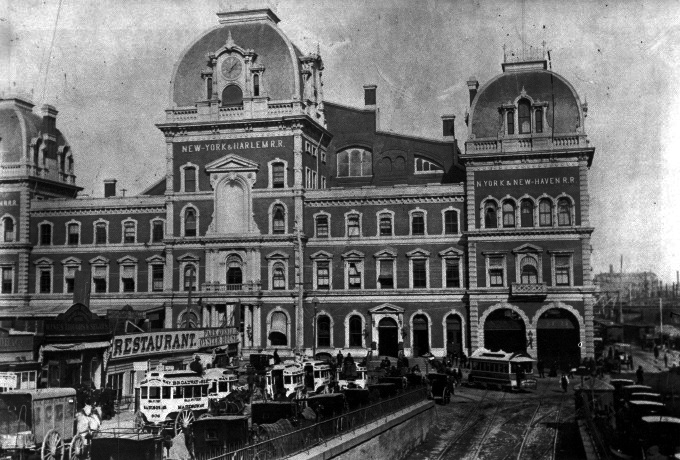
Looking out the north end of the Murray Hill Tunnel towards Grand Central Depot in 1880; note the labels for the New York, Harlem, and New Haven Railroads; the New York Central and Hudson River was off to the left. The two larger portals on the right allowed some horse-drawn trains to continue further downtown.
(Wiki Image By Unknown photographer – Brennan, Joseph (2004-2005). “Beach Pneumatic.” Chapter 9: “Sinking the Tracks.” Original web publication. Accessed 2015-01-24., Public Domain, https://commons.wikimedia.org/w/index.php?curid=223505)
Yes, Cornelius Vanderbilt’s final years were marked by the continued management of his vast railroad empire and a notable, albeit limited, foray into philanthropy.
Cornelius “Commodore” Vanderbilt spent his final years solidifying the railroad empire he had built, ensuring its smooth transition to his son, William Henry Vanderbilt. Unlike his contemporaries, Andrew Carnegie and John D. Rockefeller, Vanderbilt was not known for his philanthropy and showed little interest in it for most of his life.
A Fortune Preserved
In his later years, the Commodore’s primary focus was on the stability and growth of his railroad holdings, including the powerful New York Central Railroad. He continued to live a relatively modest lifestyle for a man of his immense wealth, avoiding the lavish displays of his Gilded Age peers. His main concern was ensuring that the fortune he had built remained intact and under family control after his death.
A Singular Act of Giving 🎓
Vanderbilt’s only significant act of philanthropy came in 1873, late in his life. At the urging of his much younger second wife, Frank Armstrong Crawford Vanderbilt, he gave $1 million to fund the founding of Vanderbilt University in Nashville, Tennessee.
The gift was intended to help heal the sectional wounds of the Civil War. By founding a major university in the South, Vanderbilt hoped to contribute to the region’s recovery and foster national unity. This act stood in stark contrast to his general reputation as a ruthless businessman who rarely gave money away.
Legacy and Inheritance
When Cornelius Vanderbilt died in 1877, he was the richest man in America, leaving a fortune estimated at over $100 million (equivalent to billions today).
His will became a point of public interest and controversy. True to his goal of preserving the empire, he left the vast majority—around 95%—of his estate to his son William Henry, believing him to be the only one capable of managing the family’s business interests. His other children received comparatively small inheritances, leading to a bitter but ultimately unsuccessful legal battle over the will.
Vanderbilt’s philanthropic legacy is, therefore, almost entirely embodied by the university that bears his name. He did not subscribe to the “Gospel of Wealth” as Carnegie did, nor did he establish the kind of far-reaching foundations that Rockefeller created. His legacy remains primarily that of a master capitalist who built a colossal fortune and an enduring transportation empire, with his philanthropy being a notable but singular exception to a lifetime of accumulation.
Cornelius Vanderbilt Civilization
Cornelius Vanderbilt: Advisors & Influences
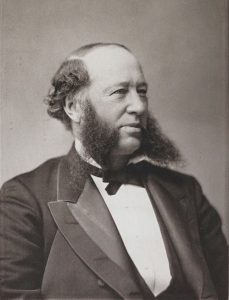
William Henry Vanderbilt
(Wiki Image By Edward Bierstadt (credit reads “Artotype, E. Bierstadt NY”) – Henry H. Gorringe, “Egyptian Obelisks”, New York: published by the author, 1882. page ii.https://archive.org/details/egyptianobelisks00gorr_0/, Public Domain, https://commons.wikimedia.org/w/index.php?curid=94041465)
- Family as Inner Circle
- William H. Vanderbilt – His eldest son, who worked closely with him in the later years of the railroad empire. William acted as both an operations executive and a strategic sounding board.
- Maria Louisa Kissam Vanderbilt (daughter-in-law) and other family members occasionally influenced his decisions in philanthropy and social positioning.
- Business Partners & Associates
- Daniel Drew – Early steamboat rival who later became both a partner and opponent in railroad finance. While not a constant “advisor,” Drew’s tactics often pushed Vanderbilt to make key strategic decisions.
- Jay Gould and James Fisk Jr. – Competitors in the Erie Railroad War. Again, not allies, but their aggressive financial maneuvers forced Vanderbilt to consult trusted confidants before countering them.
- Chauncey M. Depew – A younger lawyer and later railroad executive who worked under Vanderbilt in the New York Central Railroad system. Known for political skill and public relations, gave Vanderbilt insight into legislative matters.
- Legal & Financial Counsel
- Samuel Barton – Longtime business manager and cousin, who handled many operational and contractual details.
- Financial clerks and lawyers – Vanderbilt employed a small legal staff to manage charters, mergers, and court battles, though records rarely name them individually.
- Operational Experts
- Railroad superintendents and engineers – Provided him with technical advice on rail construction, scheduling, and rolling stock improvements. Many came from the Hudson River Railroad and New York & Harlem Railroad teams.
- Steamboat captains and shipbuilders – In his earlier career, trusted ship captains advised on vessel design and navigation efficiency.
- Self as Chief Strategist
- Vanderbilt was famously suspicious of outside influence—he often trusted his own judgment above all.
- He prided himself on personal knowledge of operations, prices, and competition, making him far less dependent on professional advisors than most tycoons.
If you’d like, I can map this into a Cornelius Vanderbilt “Advisor Web” diagram showing the closeness and influence level of each person or group over his career—from steamboats to railroads. That would make it easier to see who truly shaped his decisions.
Cornelius Vanderbilt: Worldwide Rail Economics
While Cornelius Vanderbilt’s railroad empire was located entirely within the United States, it had a significant impact on worldwide rail economics by controlling the dominant trade route for American exports to the global market.
Vanderbilt did not build or operate railroads overseas. His genius was in consolidating a powerful network within the U.S. that acted as a critical gateway for international commerce.
The Gateway to the World 🌎
The Commodore’s primary asset, the New York Central Railroad, was the main artery connecting the rich agricultural and industrial heartland of the American Midwest to the Port of New York. In the late 19th century, this was the most important port in the world’s fastest-growing economy.
By controlling the route to New York City, Vanderbilt effectively controlled a funnel through which a vast portion of American goods—grain from the Great Plains, cattle from Chicago, and manufactured products—had to pass before being loaded onto ships bound for Europe and the rest of the world.
Making American Exports Competitive
Vanderbilt’s obsession was efficiency. By consolidating smaller, competing lines into one massive system, he dramatically lowered the costs of transporting goods. This efficiency had a direct global impact.
When the cost of shipping grain from a farm in Ohio to a port in New York dropped, the final price of that grain in London or Liverpool also dropped. This made American agricultural exports far more competitive on the world market, impacting international trade balances and the economies of other nations.
A Magnet for Foreign Capital 💰
The great American railroad boom of the Gilded Age was heavily financed by foreign capital, particularly from British and other European investors. A powerful, stable, and profitable enterprise like Vanderbilt’s New York Central was seen as a prime American asset. The success and scale of his railroad helped attract a flood of international investment into U.S. infrastructure, directly linking European financial markets to American industrial growth.
A Model for Consolidation
While he wasn’t personally involved in foreign railroads, Vanderbilt’s ruthless but effective model of consolidating fragmented lines into a single, powerful, and efficient network was a powerful example. Industrialists and governments around the world, who were amid their own national railroad construction booms, observed his methods as a case study in creating a dominant and profitable transportation system.
Cornelius Vanderbilt: Geopolitics

A map of Nicaragua in 1856
(Wiki Image By John Haven, New York – 1856 publication by John Haven, via [1], Public Domain, https://commons.wikimedia.org/w/index.php?curid=6822442)
Cornelius Vanderbilt’s geopolitical influence was primarily limited to his business ventures in the mid-19th century, particularly his involvement in Central America and the transatlantic shipping trade. Unlike later industrialists, he did not actively seek to shape U.S. foreign policy. His influence stemmed from his economic power and the conflicts it generated.
The Nicaragua Route and William Walker 🇳🇮
During the California Gold Rush, Vanderbilt established the Accessory Transit Company, a shipping line that ferried people to California via Nicaragua. His route was faster and more efficient than competitors’ routes, and he built a transportation network across the country’s narrow isthmus. This business venture embroiled him in the country’s politics when American adventurer William Walker seized power in Nicaragua.
Walker’s regime revoked Vanderbilt’s transit rights, seizing his ships and property. In response, Vanderbilt, known for his ruthless business tactics, used his money and influence to finance a revolt against Walker’s government. He supported rebel forces in neighboring Costa Rica, which eventually led to Walker’s downfall and re-established Vanderbilt’s control over his transit route. This episode showed how a powerful American businessman could directly influence political events in another country to protect his commercial interests.
Transatlantic Shipping 🚢
Vanderbilt’s transatlantic steamship business was a challenge to European dominance in shipping. He competed directly with heavily subsidized British and American lines. Through his characteristic fare wars and focus on efficiency, he eventually drove some of his competitors out of business. His efforts showed the power of American business to challenge established European economic interests on the global stage.
Domestic Focus 🇺🇸
Ultimately, Vanderbilt’s geopolitical influence was overshadowed by his domestic focus. He sold his shipping interests to concentrate on building his U.S. railroad empire. His enduring legacy is the consolidation and modernization of the American transportation system, which had a far greater impact on the U.S. economy and national development than his brief forays into international affairs.
You can learn more about Cornelius Vanderbilt’s life and his business strategies by watching this video: Business Legends: Cornelius Vanderbilt.
Cornelius Vanderbilt: Law
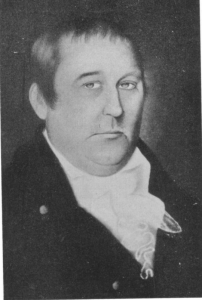
Thomas Gibbons, 2nd Mayor of Savannah, Georgia
(Wiki Image By DrRenShen – Own work, CC BY-SA 4.0, https://commons.wikimedia.org/w/index.php?curid=67883884)
Cornelius Vanderbilt’s relationship with the law was characterized by his willingness to challenge it when it suited his interests and his skillful exploitation of existing legal loopholes. He often used the courts to his advantage, but when the law was a hindrance, he famously dismissed it.
Challenging a Steamboat Monopoly ⚖️
In his early career, Vanderbilt worked for steamboat operator Thomas Gibbons. The state of New York had granted a monopoly on all steamboat traffic in its waters to Robert Fulton and Robert Livingston. Gibbons challenged this monopoly, and Vanderbilt played a key role in the ensuing legal battle. The case, Gibbons v. Ogden (1824), went all the way to the U.S. Supreme Court. The court ruled that the federal government, not the states, had the power to regulate interstate commerce, effectively breaking up the monopoly. This victory freed up the waterways for competition and allowed Vanderbilt to launch his own successful steamboat company.
The “Public be Damned” Attitude 😠
As Vanderbilt’s power grew, his relationship with the law became more adversarial. When the law or public opinion threatened his business, he was known for his defiant attitude. The famous, though possibly apocryphal, quote, “The public be damned,” is often attributed to him, reflecting his belief that his primary obligation was to his business and not to public welfare or legal constraints. He used his immense financial power to pressure and outmaneuver rivals, often through legal means, but he was not afraid to ignore the law when necessary.
The Erie Railroad War 🚂
Vanderbilt’s most famous legal battle was the Erie Railroad War in the late 1860s. He attempted to take over the Erie Railroad but was thwarted by a group of financiers, including Jay Gould and Jim Fisk. They used a legal loophole to issue a massive amount of new, fraudulent stock, known as “watered stock,” to prevent Vanderbilt from buying a majority stake. Vanderbilt tried to sue them in court, but his rivals bribed judges and legislators to protect their interests. Vanderbilt eventually gave up the fight, realizing the legal and political battle was unwinnable. This incident highlighted the corruption of the Gilded Age and showed that even a tycoon as powerful as Vanderbilt couldn’t always win in a corrupted legal system.
Cornelius Vanderbilt: Political People
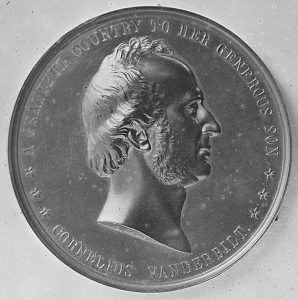
Congressional Gold Medal awarded to Cornelius Vanderbilt and authorized by Congress on January 28, 1864.
(Wiki Image By Mathew Benjamin Brady – National Archives and Records Administration, Public Domain, https://commons.wikimedia.org/w/index.php?curid=43253602)
Cornelius Vanderbilt was a master at confronting and manipulating the political system for his own benefit. He generally held politicians in contempt, famously remarking, “What do I care about the law? H’ain’t I got the power?” While he wasn’t a politician himself, his career was marked by major clashes and collaborations with the political world.
Challenging the Law and Winning 🏛️
Vanderbilt’s first major collision with the political system came early in his career. He entered the steamboat business by directly challenging a legally protected monopoly on New York’s waterways, which had been granted by the state legislature to Robert Fulton and Robert Livingston. Vanderbilt’s fight contributed to the landmark 1824 Supreme Court case Gibbons v. Ogden. The court’s decision shattered the state-level monopoly, affirming the federal government’s power to regulate interstate commerce. This was a profound political and legal victory that opened the nation’s waterways to competition, which the Commodore was perfectly positioned to dominate.
The Commodore and the Civil War ⚓
During the Civil War, Vanderbilt demonstrated his political influence through a grand patriotic gesture. He donated his prized steamship, the Vanderbilt, the largest and fastest in his fleet, to the Union Navy to help hunt down Confederate raiders. In recognition of this critical contribution to the war effort, the U.S. Congress awarded him the Congressional Gold Medal in 1864, a high honor that solidified his status as a key civilian ally of the Lincoln administration.
Bribery, Corruption, and the Erie War
Vanderbilt’s most direct and infamous battle with political people occurred during the “Erie War.” While trying to take over the Erie Railroad, his rivals, Jay Gould and Jim Fisk, thwarted him by printing fraudulent stock certificates. To legalize their actions, Gould and Fisk went to the state capital in Albany with suitcases full of cash and openly bribed members of the New York State legislature. The corrupt politicians sided with Gould and Fisk, dealing Vanderbilt a rare and humiliating defeat. The episode perfectly captured the raw, transactional, and often illegal nature of Gilded Age politics.
A Political Act of Philanthropy
Late in his life, Vanderbilt’s major act of philanthropy was also a political statement. His $1 million gift to found Vanderbilt University in Nashville, Tennessee, was a significant gesture of reconciliation toward the war-torn South. It was an investment in national healing, using his immense wealth to bridge the political and social divisions left by the Civil War.
Cornelius Vanderbilt: Rich and Poor
Here’s a comparison table showing how the rich and the poor experienced Cornelius Vanderbilt’s influence during his career in steamboats and railroads:
| Aspect | Rich (Wealthy Business Class, Investors, Industrialists) | Poor (Working Class, Immigrants, Laborers) |
| Transportation Costs | Benefited from Vanderbilt’s price wars and efficiency, which reduced shipping and passenger costs for bulk goods and long-distance travel. | Could afford cheaper ferry, steamboat, and train fares, making migration, job hunting, and urban travel more accessible. |
| Access to Markets | Gained faster, more reliable shipment of goods, expanding national and international trade opportunities. | Gained broader access to jobs in cities and industrial hubs connected by Vanderbilt’s routes. |
| Business Opportunities | Could invest in or partner with Vanderbilt’s enterprises; profited from expanding commerce. | Often employed in railroad construction, steamboat crews, and related services, though in low-wage, dangerous jobs. |
| Wealth Concentration | Many wealthy peers increased their fortunes through Vanderbilt’s transportation networks and capital markets. | Saw little direct wealth accumulation; wages remained low compared to the profits generated by transportation tycoons. |
| Urban Growth & Property Values | Profited from rising property values in areas connected by Vanderbilt’s lines. | Experienced rising rents in growing cities, sometimes forcing relocation to poorer districts. |
| Comfort & Luxury Travel | Enjoyed first-class steamer cabins and private rail cars with high-end amenities. | Rode in crowded, basic steerage or third-class rail cars with minimal comfort. |
| Economic Power | Expanded ability to control trade routes and influence policy through Vanderbilt’s networks. | Had little political voice, and strikes or protests against Vanderbilt’s companies were often suppressed. |
| Long-Term Impact | Benefited from enduring wealth tied to the transportation infrastructure Vanderbilt helped create. | Gained mobility and some improved access to goods and services, but wealth inequality persisted or deepened. |
If you’d like, I can also create a visual cause-and-effect chart illustrating how Vanderbilt’s business decisions impacted the rich and the poor differently at each major stage of his career. That would highlight the imbalance in long-term benefits.
Cornelius Vanderbilt: Science & Technology
Here’s a chronological table of the scientific breakthroughs Cornelius Vanderbilt adopted or benefited from between 1810 and 1877, focusing on the science behind his business tools rather than just the engineering products:
| Year | Scientific Breakthrough | Area of Science | How Vanderbilt Adopted It | Business Impact |
| 1810s | Thermodynamics of Steam Power (application of Watt’s and Evans’ principles) | Physics / Mechanical Engineering | Applied steam engine theory to small ferryboats for efficient propulsion. | Enabled faster and more reliable ferry service in New York Harbor. |
| 1820s | High-Pressure Steam Theory | Physics / Energy Science | Used Oliver Evans’ high-pressure steam principles in newer ferry and steamboat engines. | Increased vessel speed and cargo capacity without a proportional increase in fuel consumption. |
| 1830s | Metallurgy Advances in Iron Hull Construction | Materials Science | Adopted improved iron alloys for ship hulls. | Greater ship durability and safety, allowing longer voyages. |
| 1840s | Naval Architecture and Hydrodynamics | Fluid Dynamics / Engineering | Incorporated hull designs based on improved understanding of water resistance. | Reduced drag, lowered fuel use, increased speed for transoceanic routes. |
| 1850s | Locomotive Steam Efficiency | Thermodynamics / Mechanical Engineering | Applied improved steam engine designs to rail transport. | Boosted fuel efficiency and reduced operational costs. |
| 1860s | Railway Track Standardization Principles | Physics of Motion & Civil Engineering | Adopted the common-gauge theory to minimize transfer delays. | Enhanced interconnected rail network efficiency. |
| 1860s | Double-Track Flow Optimization | Transportation Physics | Applied capacity theories to minimize train delays and improve safety. | Higher train frequency and greater throughput. |
| 1870s | Bessemer Steel Process | Metallurgy / Industrial Chemistry | Adopted stronger steel rails supported by the Bessemer process. | Allowed heavier, faster trains with reduced rail wear. |
| 1870s | Telegraphy & Electromagnetic Theory (Faraday/Maxwell principles) | Physics / Electrical Engineering | Integrated telegraph systems for railroad dispatching. | Real-time communication reduced accidents and improved scheduling. |
| 1877 | Pneumatic Air Brakes (Fluid & Pressure Physics) | Mechanical Physics | Adopted Westinghouse’s air brake technology. | Dramatically improved train safety, especially for long freight runs. |
John D. Rockefeller, Andrew Carnegie, and Cornelius Vanderbilt: Similarities
John D. Rockefeller, Andrew Carnegie, and Cornelius Vanderbilt are often referred to as “titans of industry” or “robber barons” of the Gilded Age. While they operated in different sectors, they shared several key similarities in how they built their vast fortunes and shaped American business.
Key Similarities
- Self-Made Wealth: All three men started from humble beginnings and built their empires through determination, a sharp business sense, and relentless hard work. Vanderbilt began with a small ferry business, Rockefeller started as a bookkeeper, and Carnegie was a Scottish immigrant who worked his way up from a bobbin boy in a textile mill. They were all archetypes of the “rags-to-riches” narrative of the era.
- Monopolistic Business Practices: Each of them sought to dominate their respective industries. They engaged in fierce, often ruthless, competition to eliminate rivals and gain control over a significant portion of the market.
- Vanderbilt built his wealth in shipping and then railroads, using “rate wars” and aggressive buyouts to consolidate control over key transportation lines.
- Rockefeller famously used strategies like horizontal integration (buying up competing refineries) and negotiating secret railroad rebates to create a near-total monopoly in the oil industry with Standard Oil.
- Carnegie used vertical integration to control every stage of steel production, from the iron ore mines to the railroads that shipped the finished product, allowing him to undersell competitors and become the world’s largest steel producer.
- Pioneering New Business Structures: To manage their massive enterprises, they pioneered new business models. Rockefeller’s Standard Oil Trust was the first of its kind and became the model for future corporate trusts, which allowed for centralized control over a decentralized empire. Carnegie’s use of vertical integration was a masterclass in supply chain management.
- Impact on the Industrial Revolution: They were instrumental in fueling the Second Industrial Revolution in the United States. Vanderbilt’s railroads connected the country, enabling the rapid transport of goods and people. Rockefeller’s standardized oil provided a reliable fuel source for lighting and, later, for the automobile. Carnegie’s steel was the fundamental material for building skyscrapers, bridges, and the very railroads Vanderbilt controlled.
- Legacy as Philanthropists: While they were criticized for their business practices, all three became major philanthropists in their later years, though to varying degrees.
- Carnegie was the most famous for this, promoting his “Gospel of Wealth” and giving away an estimated 90% of his fortune to build libraries, universities, and concert halls.
- Rockefeller dedicated the last four decades of his life to philanthropy, establishing the Rockefeller Foundation and giving away over $500 million to public health, medical research, and education.
- Vanderbilt was less renowned for his philanthropy, but did make one major donation to establish Vanderbilt University.
John D. Rockefeller, Andrew Carnegie, and Cornelius Vanderbilt: Differences
While John D. Rockefeller, Andrew Carnegie, and Cornelius Vanderbilt all rose to immense wealth during the Gilded Age through aggressive business tactics, their journeys, industries, and philosophies differed in significant ways.
Industries and Business Models
Their primary industries and the methods they used to achieve dominance were distinct.
- Cornelius Vanderbilt started in shipping and later transitioned to railroads. His strategy was primarily about consolidation, taking over smaller, competing lines to create a unified and efficient transportation network. He was a master of competitive price wars, often forcing rivals to pay him to stop competing.
- John D. Rockefeller focused on oil refining. His model was initially based on horizontal integration, buying out rival refineries to create a near-monopoly. He then expanded into vertical integration by controlling every step of the process, from oil pipelines to the retail market. Still, his initial focus was on eliminating competitors in the same business.
- Andrew Carnegie dominated the steel industry. His success was built almost exclusively on vertical integration, controlling the entire supply chain from raw materials (iron ore and coal mines) to manufacturing and distribution. He was less focused on destroying competitors in the way Rockefeller was and more on building the most efficient and cost-effective operation possible.
Philanthropic Philosophies
The scale and philosophy of their philanthropy were also notably different.
- Vanderbilt’s philanthropy was minimal and largely a single, massive act late in life. He donated $1 million to establish Vanderbilt University in Nashville, Tennessee, and that was his only major charitable contribution. He was not a proponent of widespread, systematic giving.
- Carnegie’s philanthropy was guided by his “Gospel of Wealth” philosophy, which held that the wealthy had a moral obligation to use their fortunes to improve society. He focused on creating opportunities for self-improvement, famously funding over 2,500 public libraries as well as institutions for education, science, and world peace.
- Rockefeller’s philanthropy, while also massive, was far more scientific and systematic. Influenced by his advisor, Frederick T. Gates, he created large, professional foundations like the Rockefeller Foundation to tackle public health issues and education with a data-driven approach, seeking to cure diseases and solve problems at their source.
Reputation and Character
Their public personas and management styles also set them apart.
- Vanderbilt, a rough-and-tumble figure, was nicknamed “the Commodore” and known for his gruff, no-nonsense manner. He was widely seen as a “Robber Baron” and was not concerned with public opinion.
- Carnegie, while ruthless in business, presented himself as a self-made man of intellect and culture. He was a writer and orator who publicly espoused his views on wealth and society, trying to shape public perception of his class.
- Rockefeller was a quiet, meticulous, and intensely private man. Journalists like Ida Tarbell vilified him for his ruthless business practices. Still, he also quietly created a new model of institutional philanthropy that sought to improve society on a global scale.
While all three men built empires that defined an era, they did so through unique strategies in distinct industries, and their legacies of both wealth-building and giving back remain a study in American capitalism.
For more information, here is a video that details the different ways in which these “Robber Barons” built their fortunes. The Gilded Age, Robber Barons, & The Rise of Big Business.
John D. Rockefeller, Andrew Carnegie, and Cornelius Vanderbilt Compared. Table
Here is a table comparing John D. Rockefeller, Andrew Carnegie, and Cornelius Vanderbilt, three of the most influential tycoons of America’s Gilded Age:
| Feature | John D. Rockefeller | Andrew Carnegie | Cornelius Vanderbilt |
| Primary Industry | Oil (Kerosene, gasoline) | Steel | Shipping and Railroads |
| Key Company | Standard Oil Company | Carnegie Steel Company | New York Central Railroad |
| Business Strategy | Horizontal & Vertical Integration: Ruthlessly bought out or drove out competitors (horizontal) and controlled every stage of production and distribution (vertical). | Vertical Integration: Controlled every step from raw materials (iron ore, coal) to the final product (steel rails). | Consolidation: Bought up and merged numerous smaller, competing lines into a vast, efficient network. |
| Reputation | Both “Robber Baron” and “Captain of Industry” | Both “Robber Baron” and “Captain of Industry” | Primarily “Robber Baron” |
| Key Innovation | Paved the way for oil pipelines, revolutionizing transportation away from railroads. | Adopted and perfected the Bessemer process, making steel production cheaper and more efficient. | Pioneered the creation of vast, integrated corporate railroad systems. |
| Wealth Peak | ~$900 million (over $400 billion today) | ~$480 million (over $300 billion today) | ~$100 million (over $200 billion today) |
| Controversies | Monopoly power, antitrust litigation | Labor disputes (e.g., Homestead Strike) | Ruthless business practices |
| Philanthropic Legacy | Massive and Lasting: Gave away over $500 million (in late 19th-early 20th century dollars), establishing the Rockefeller Foundation, University of Chicago, and Rockefeller Center. | Systematic and Complete: Articulated the “Gospel of Wealth” and gave away nearly 90% of his fortune, establishing Carnegie Hall, thousands of libraries, and Carnegie Mellon University. | Limited: Gave away a small portion of his immense fortune, most notably endowing Vanderbilt University. |
| Heirs’ Wealth | The Rockefeller family maintained and grew its wealth through generations via family trusts. | Carnegie gave away nearly all his fortune, leaving his descendants with little. | The Vanderbilt family’s fortune was squandered mainly within three generations. |

